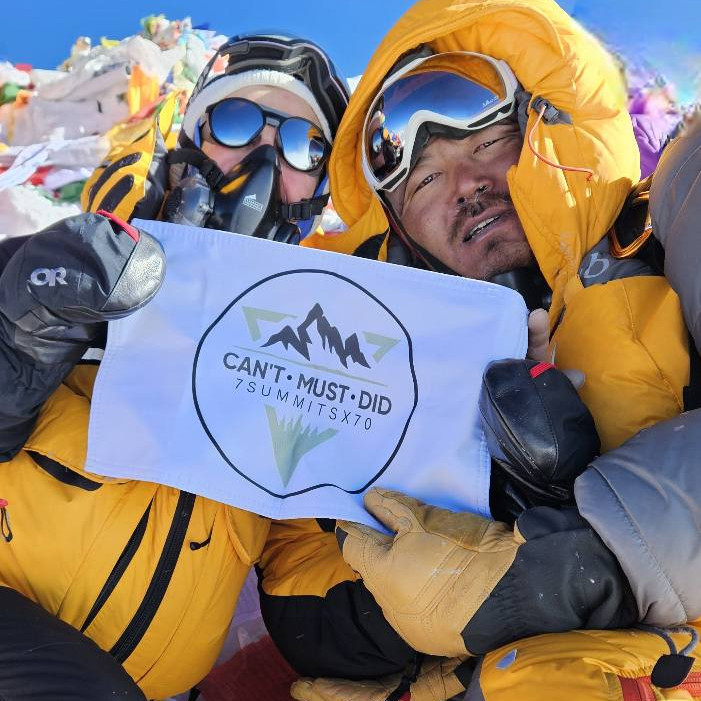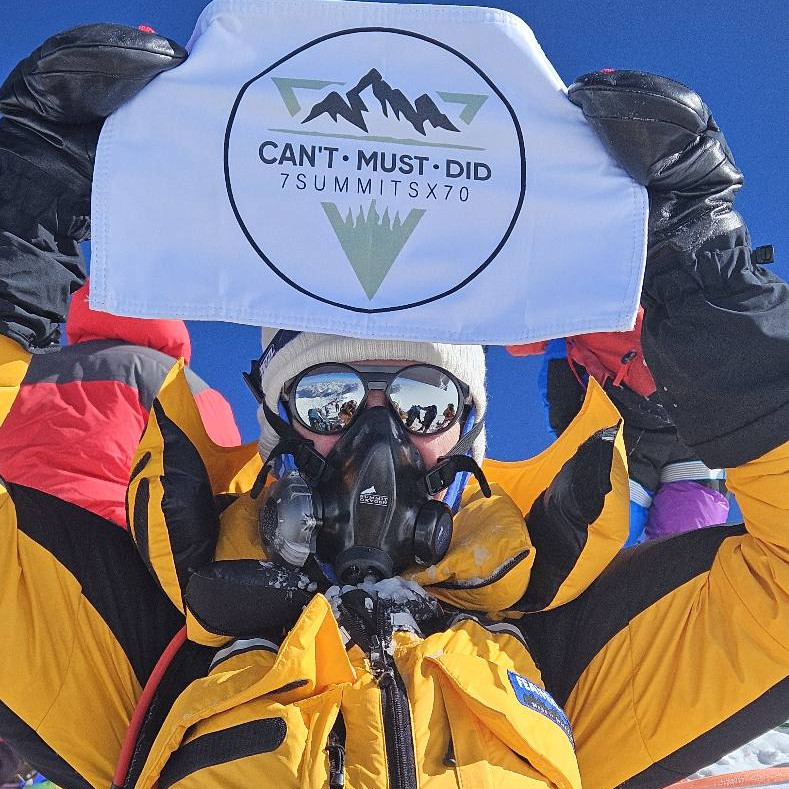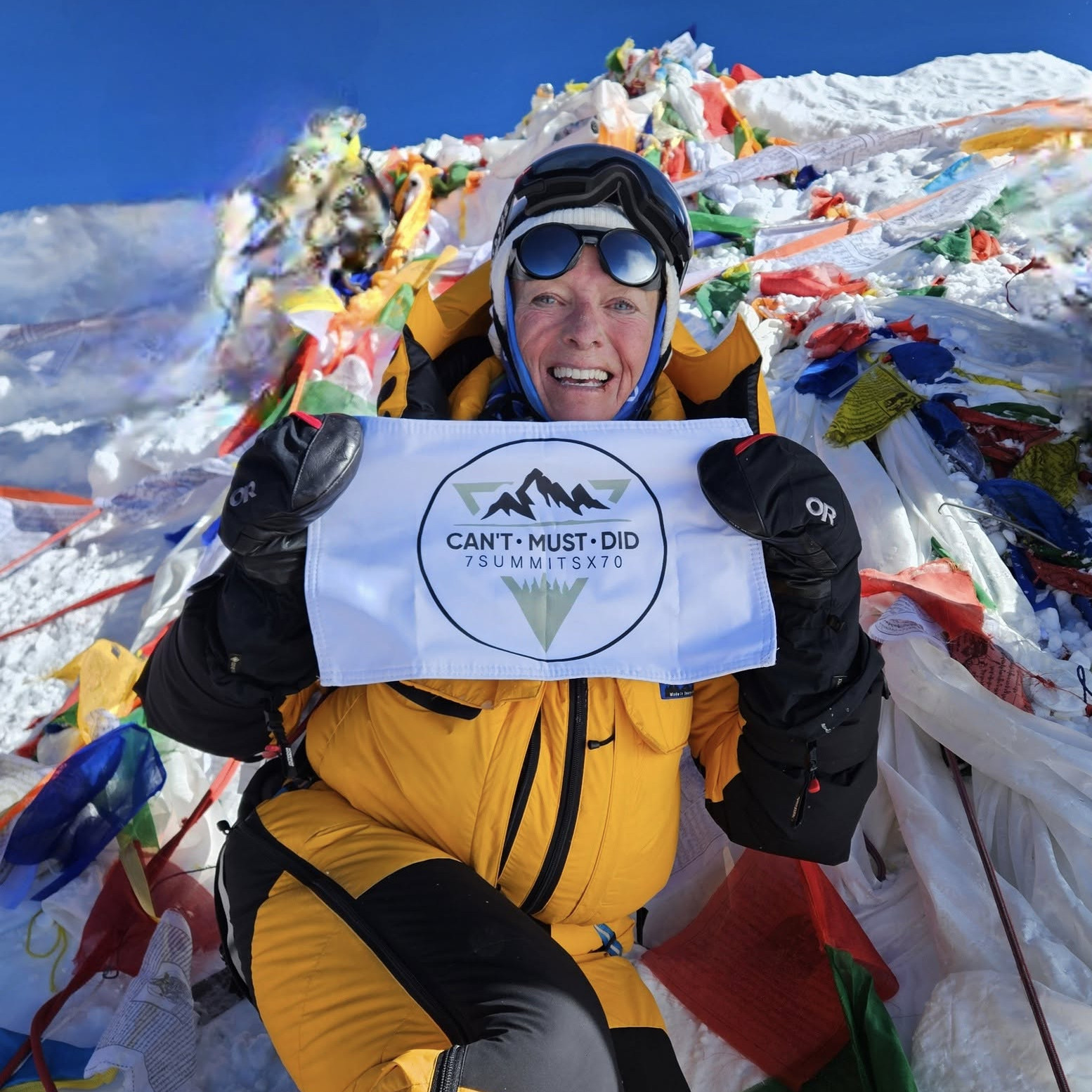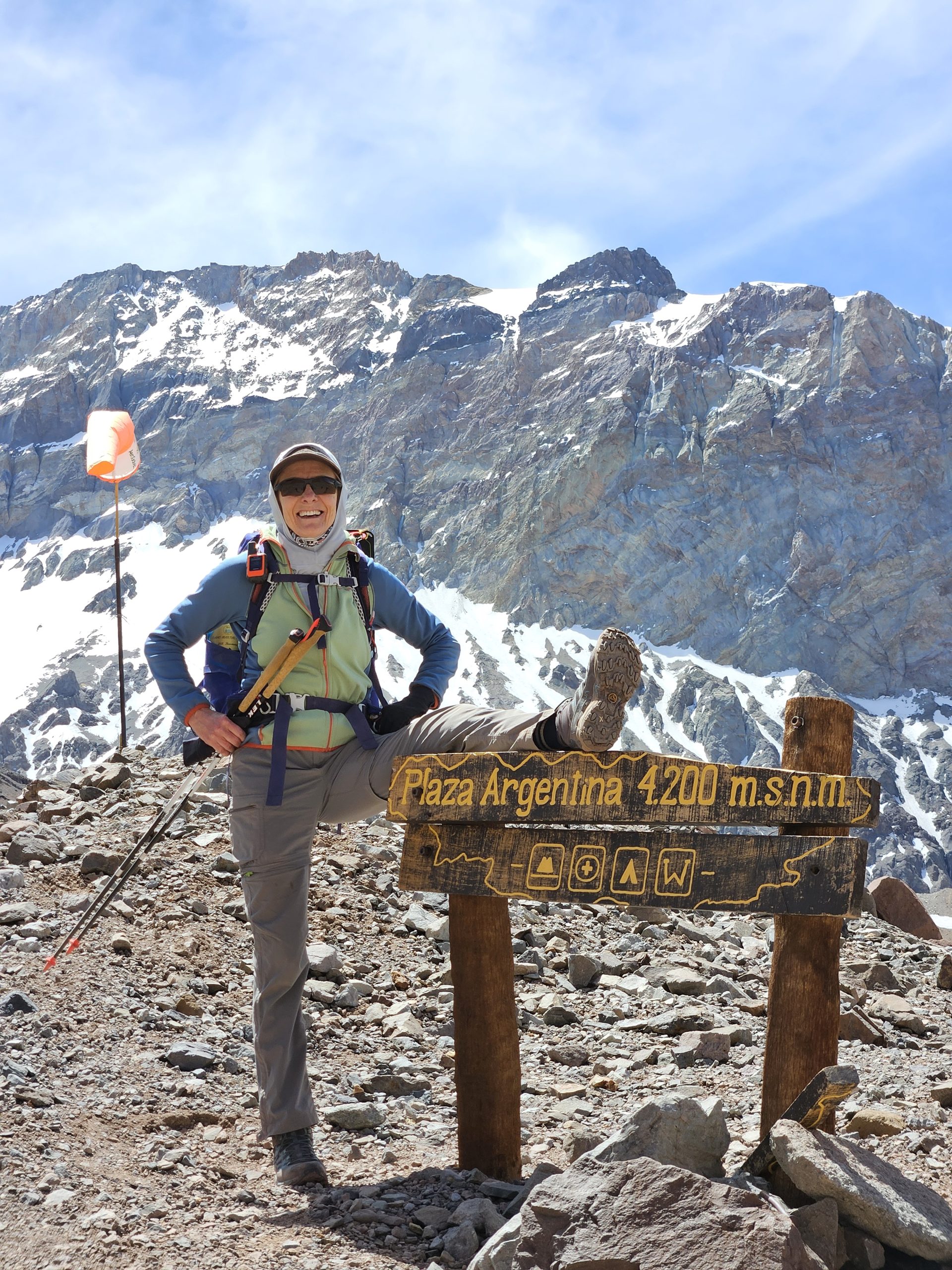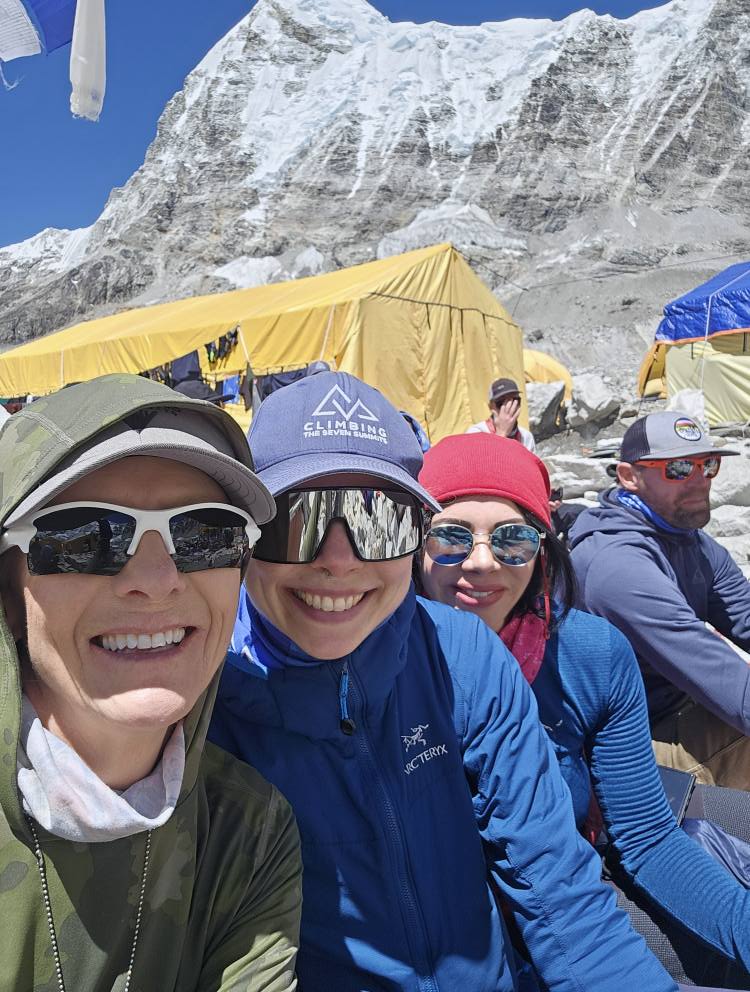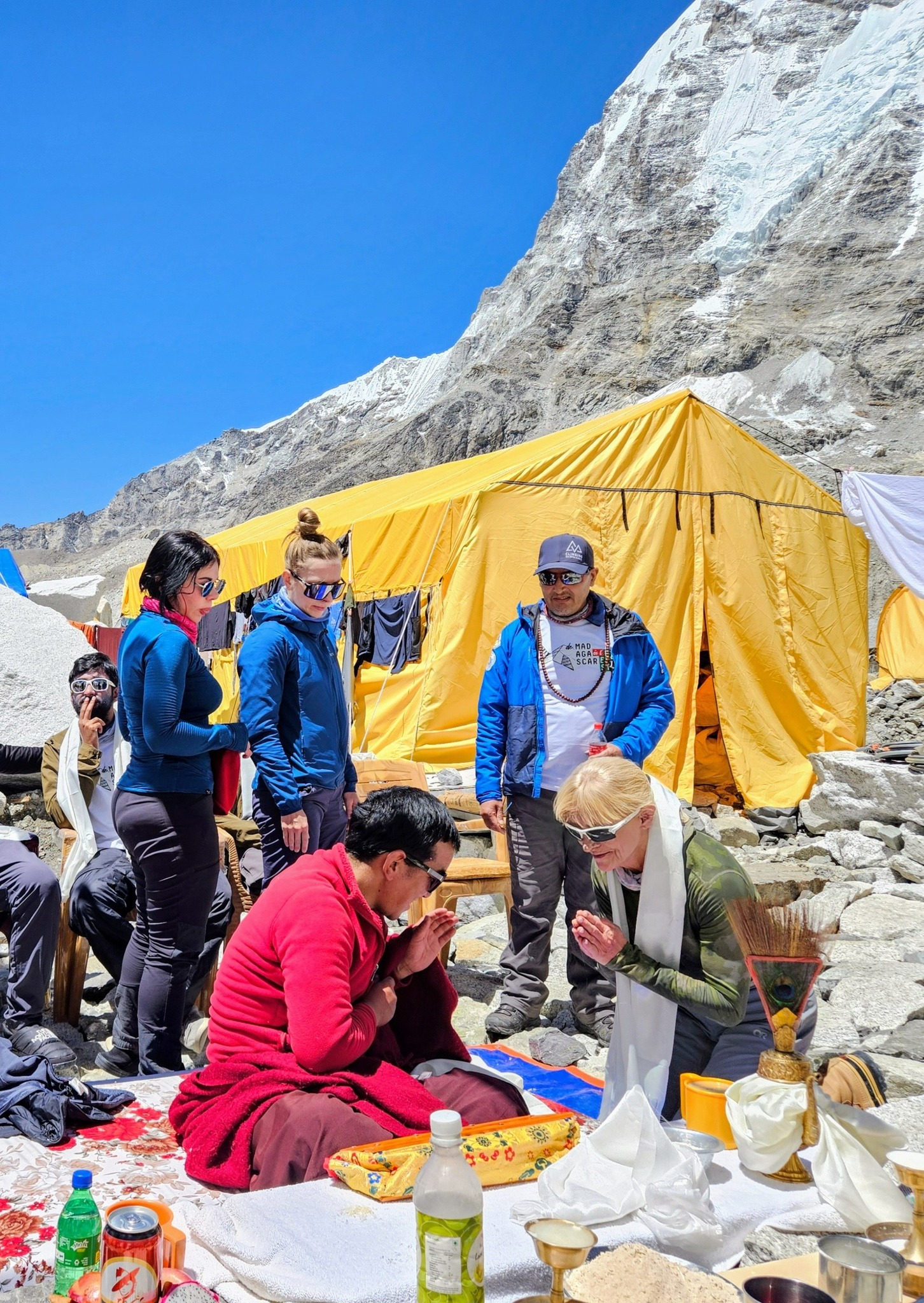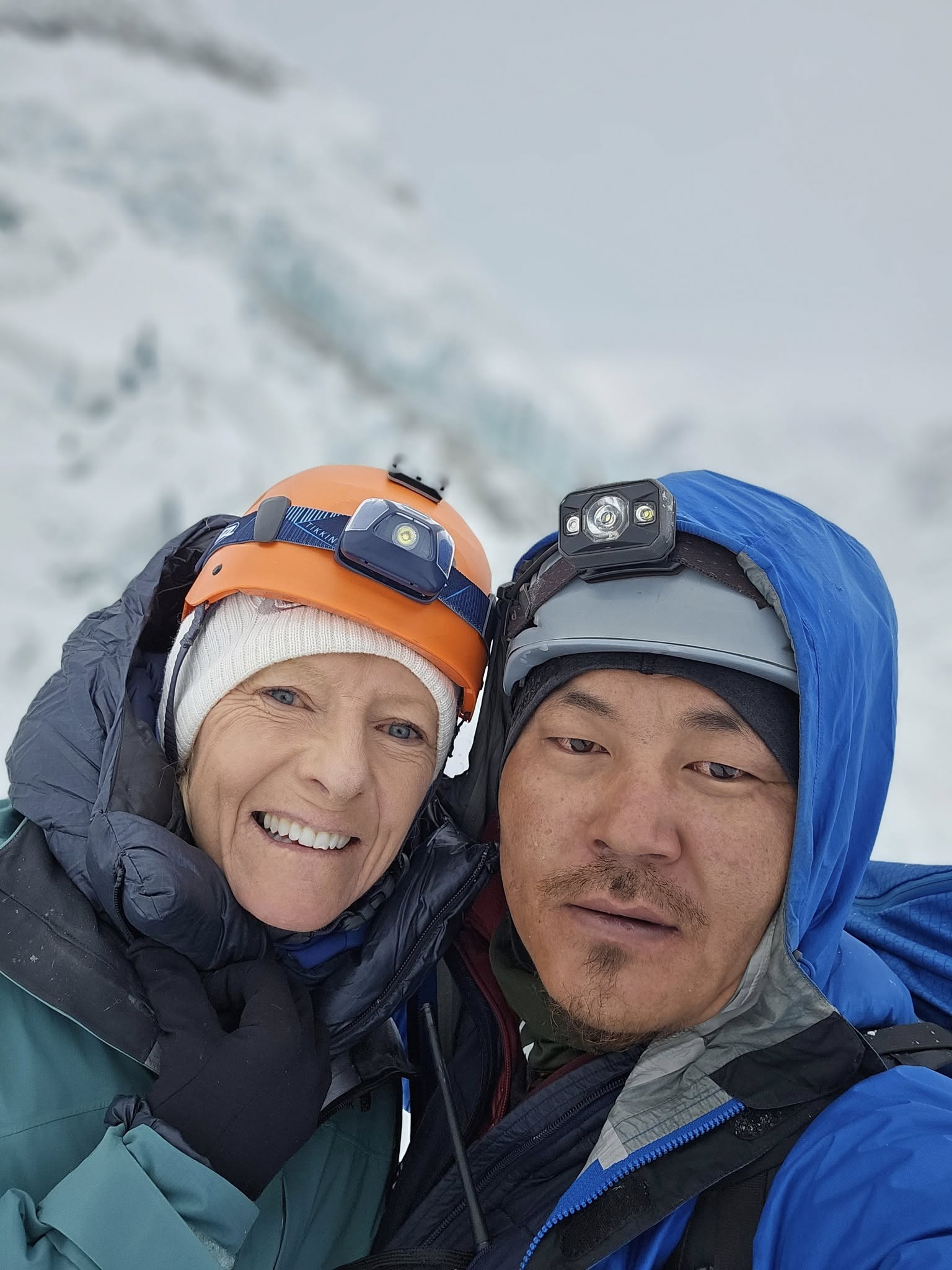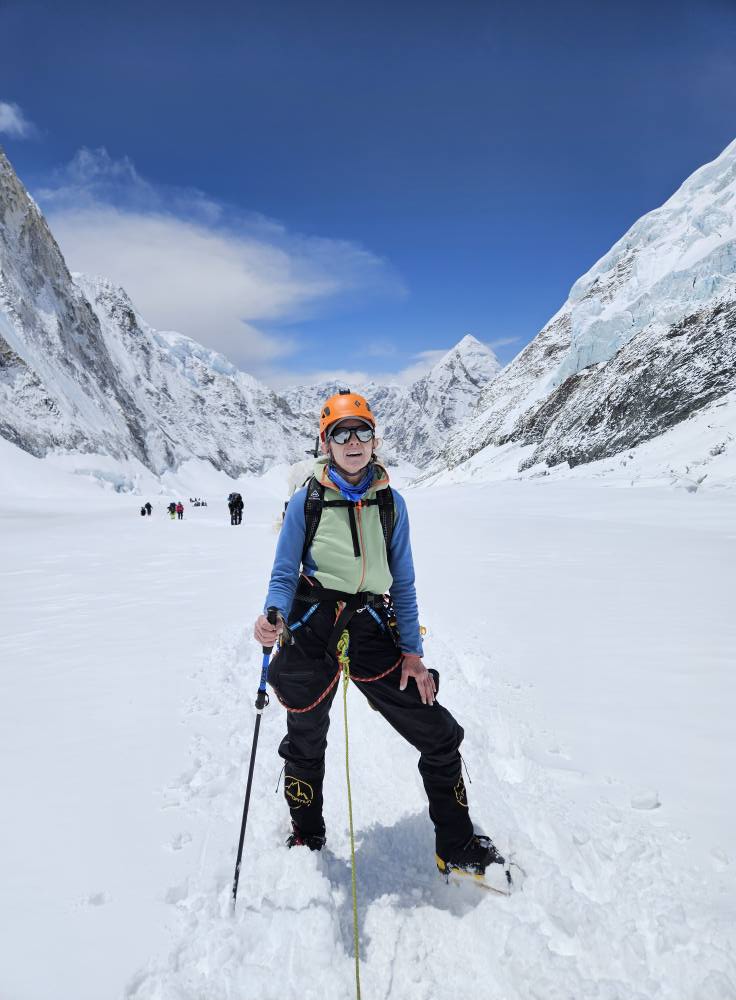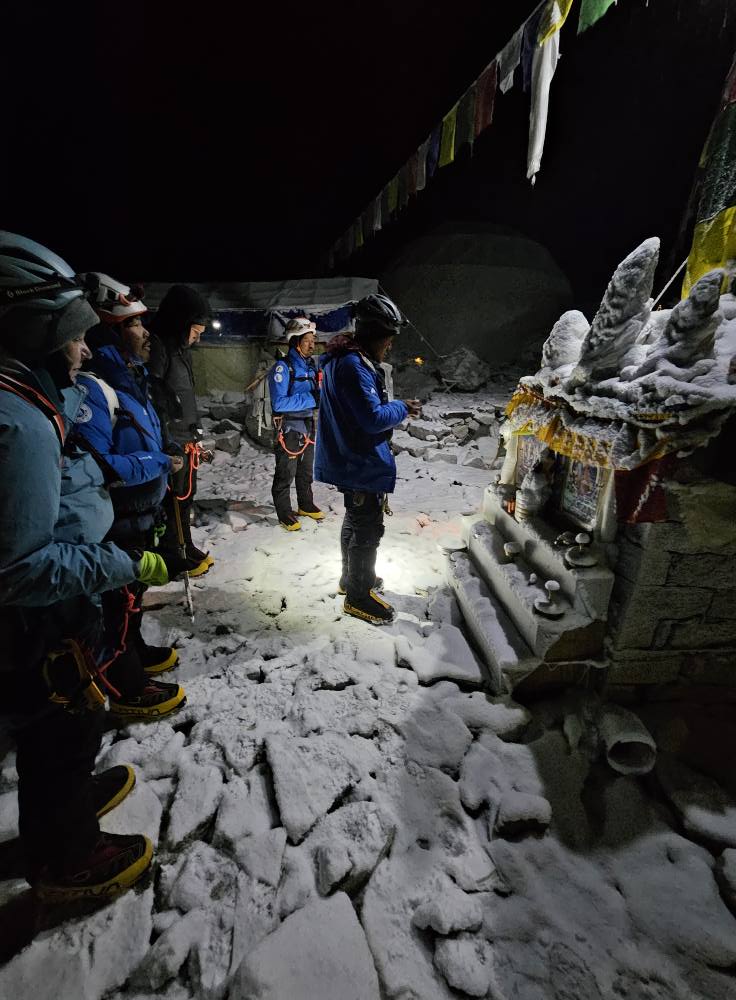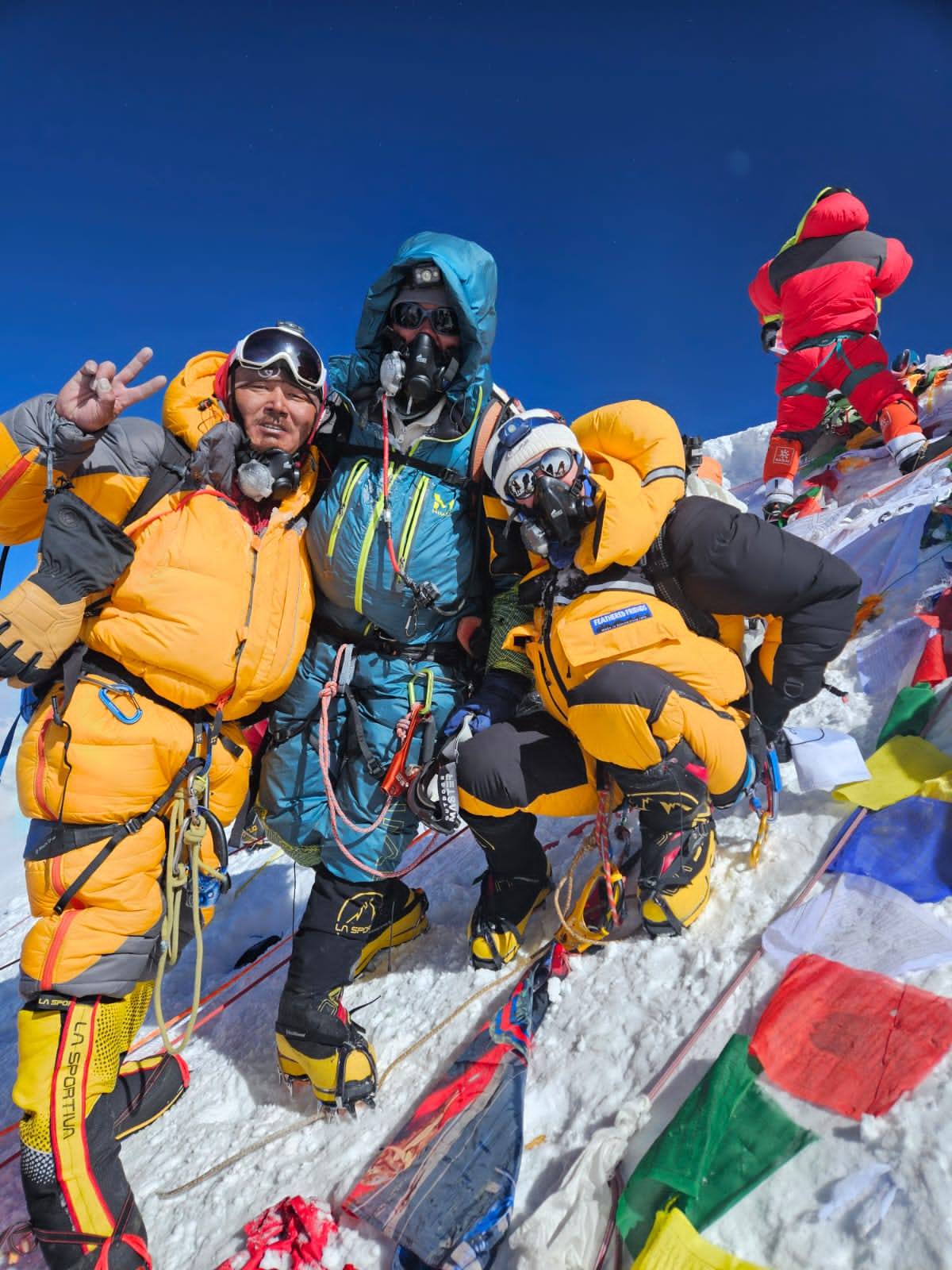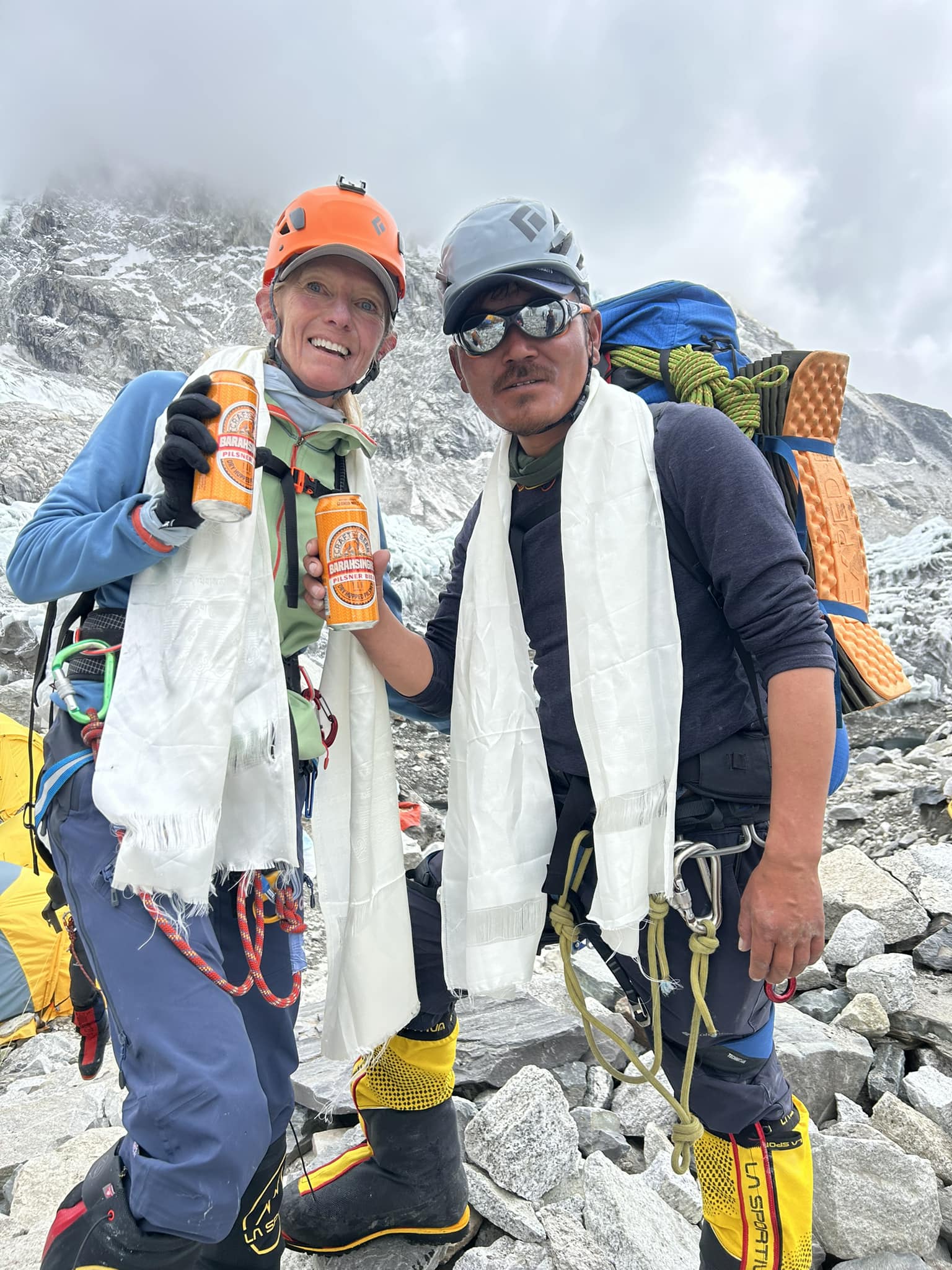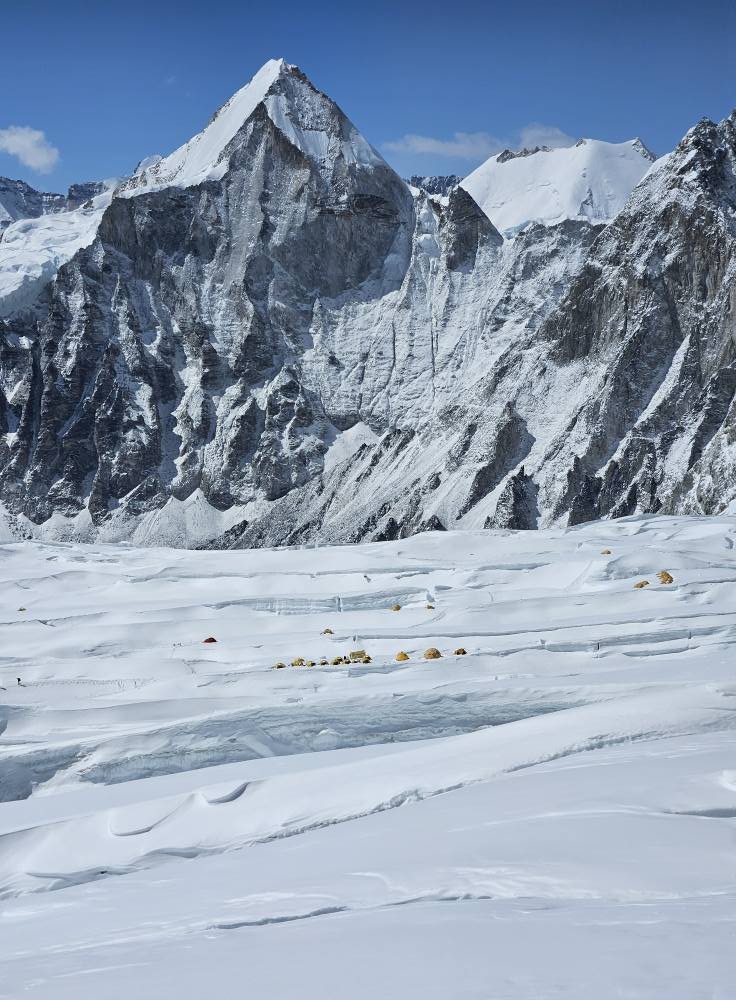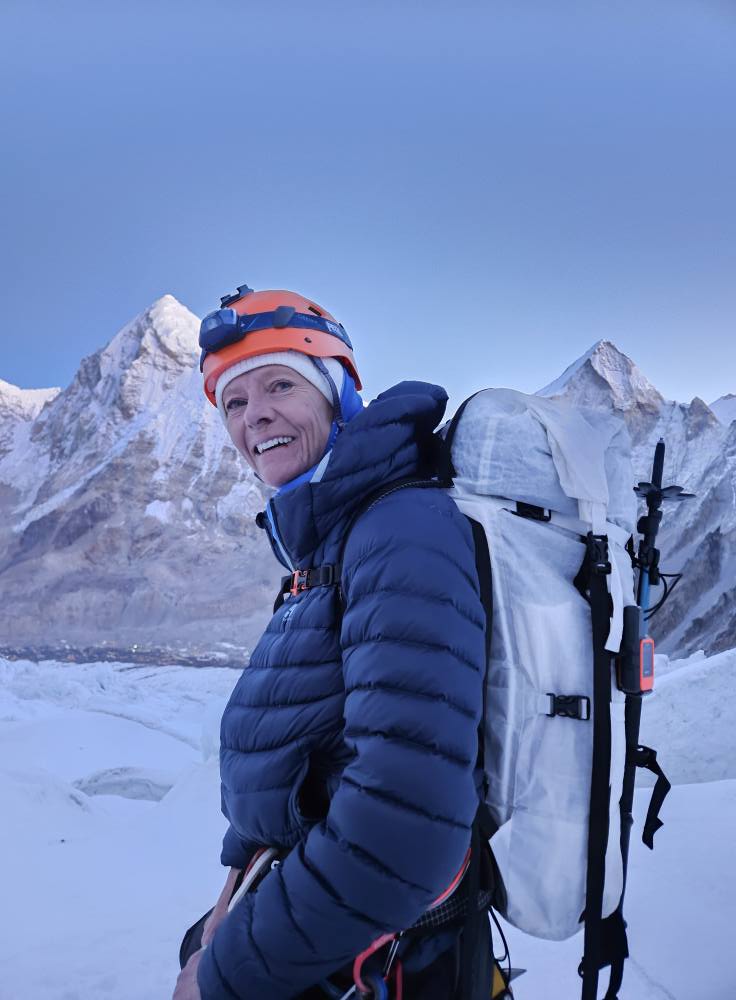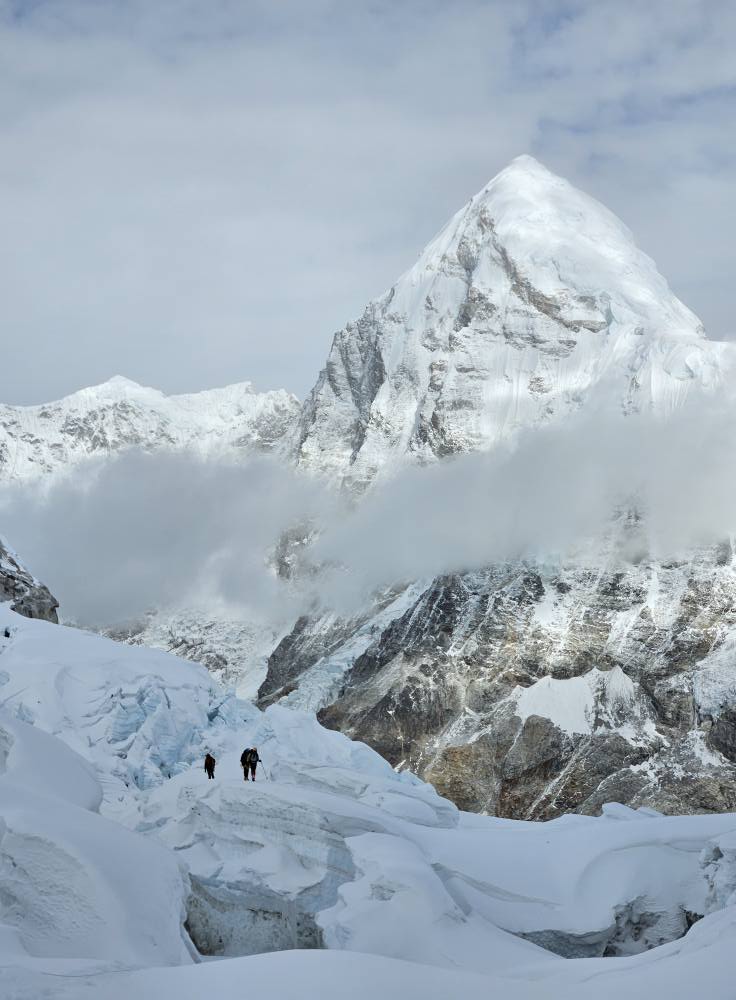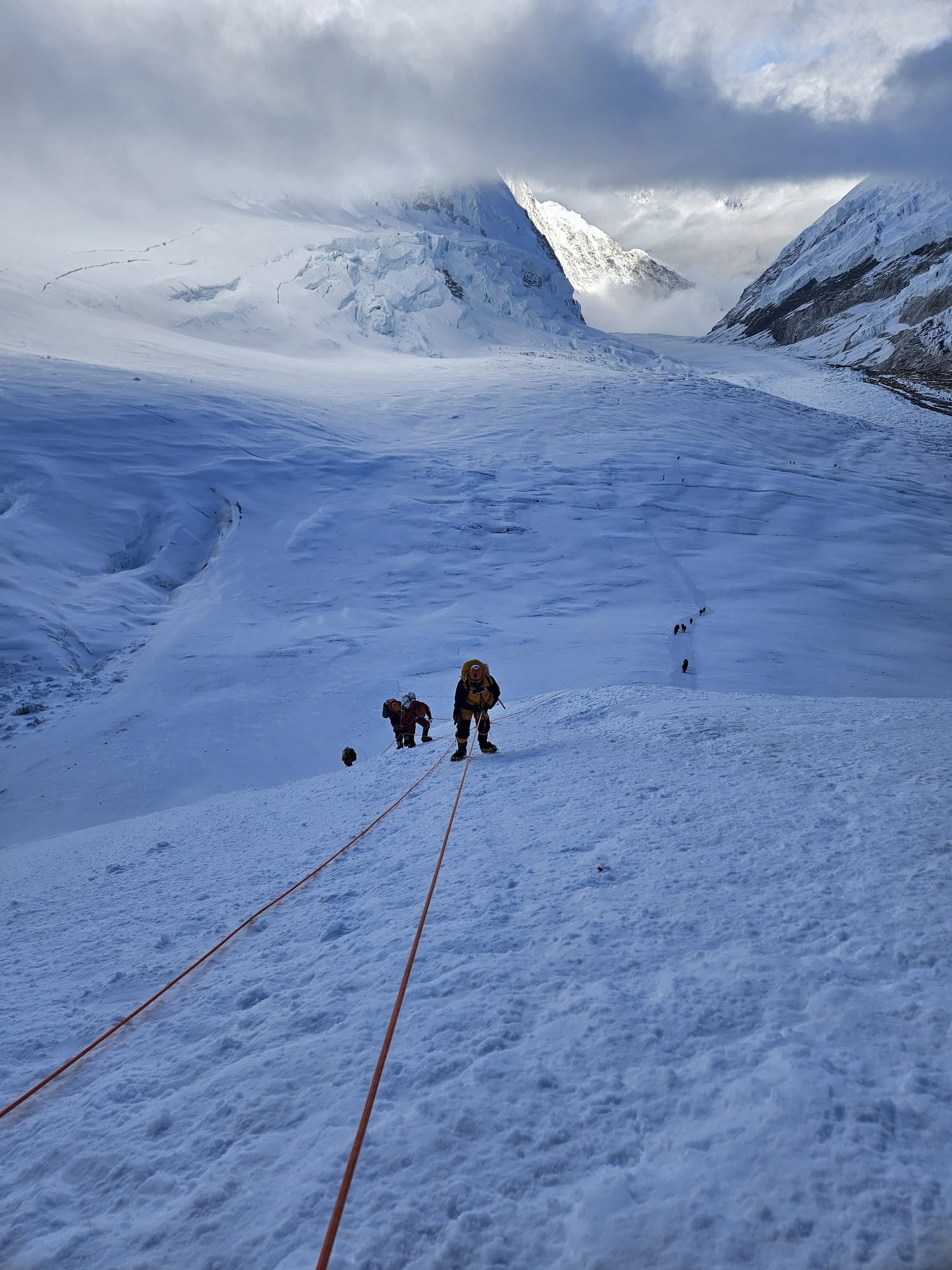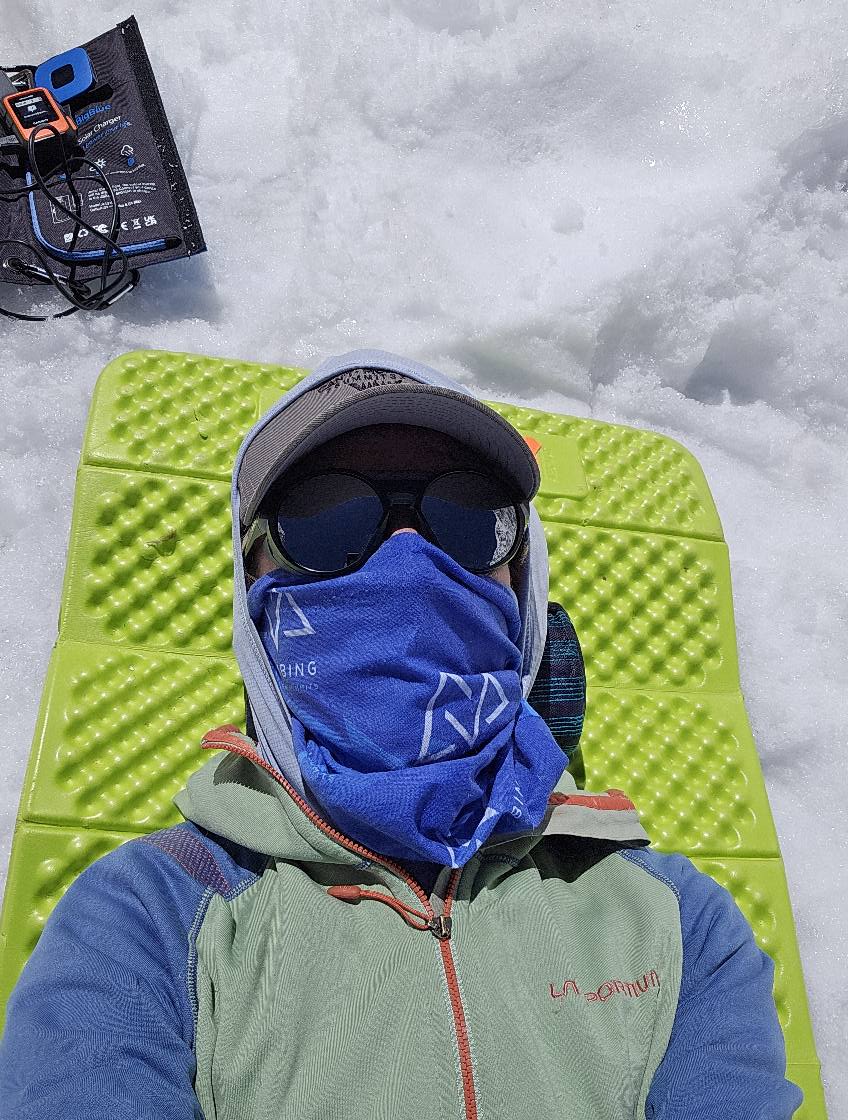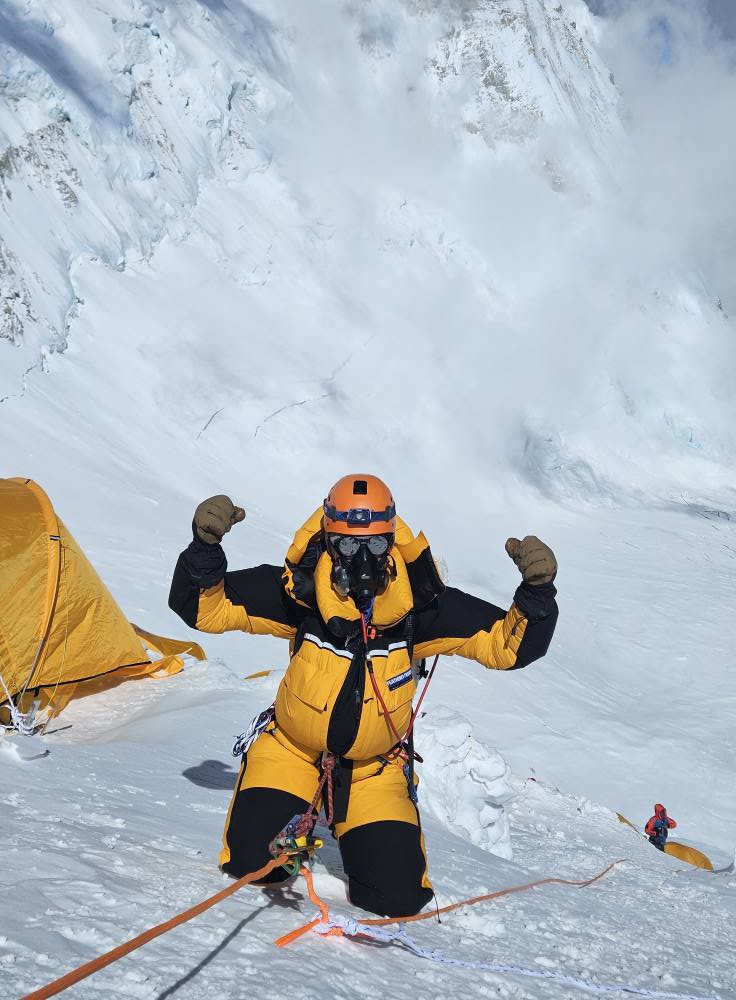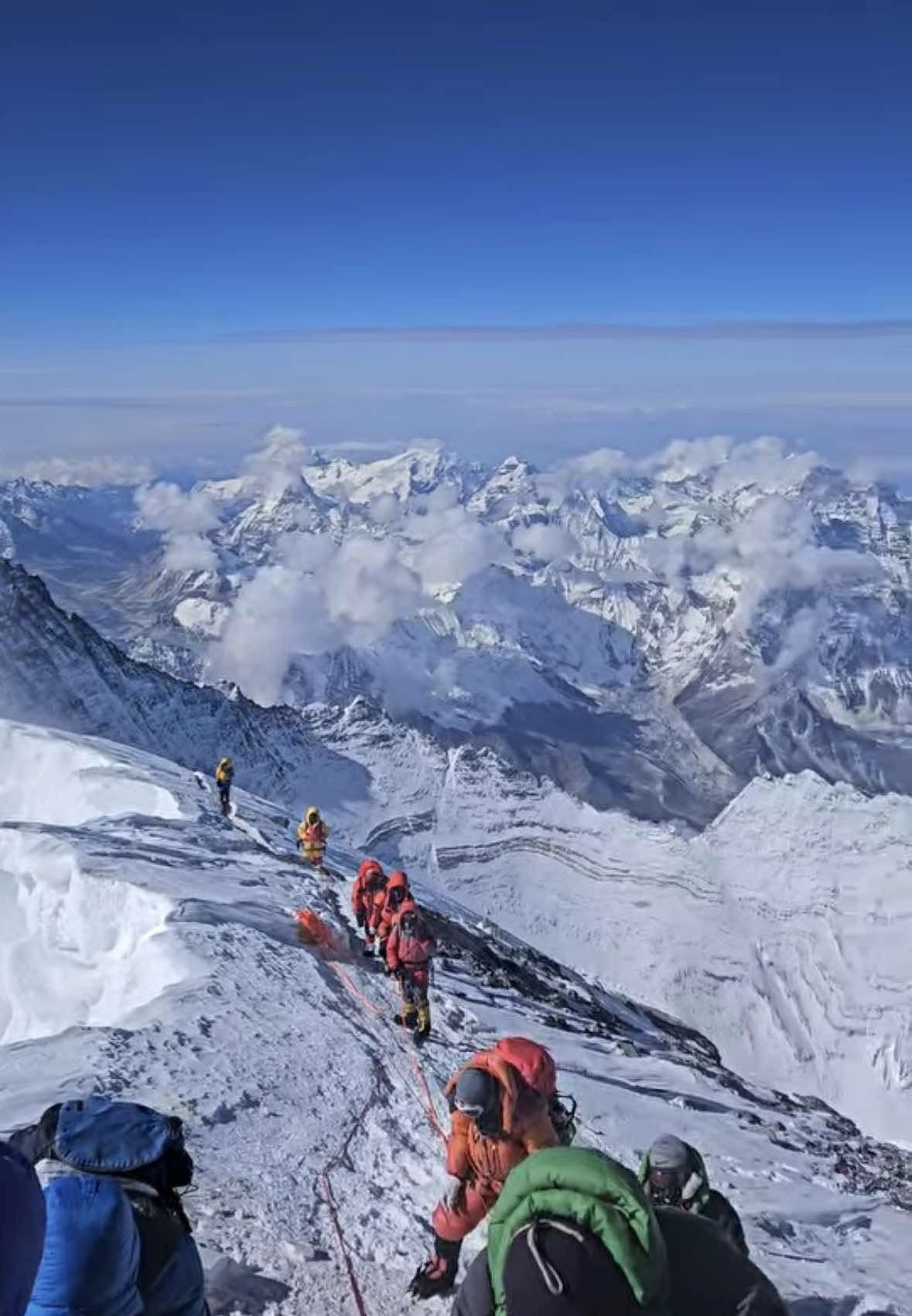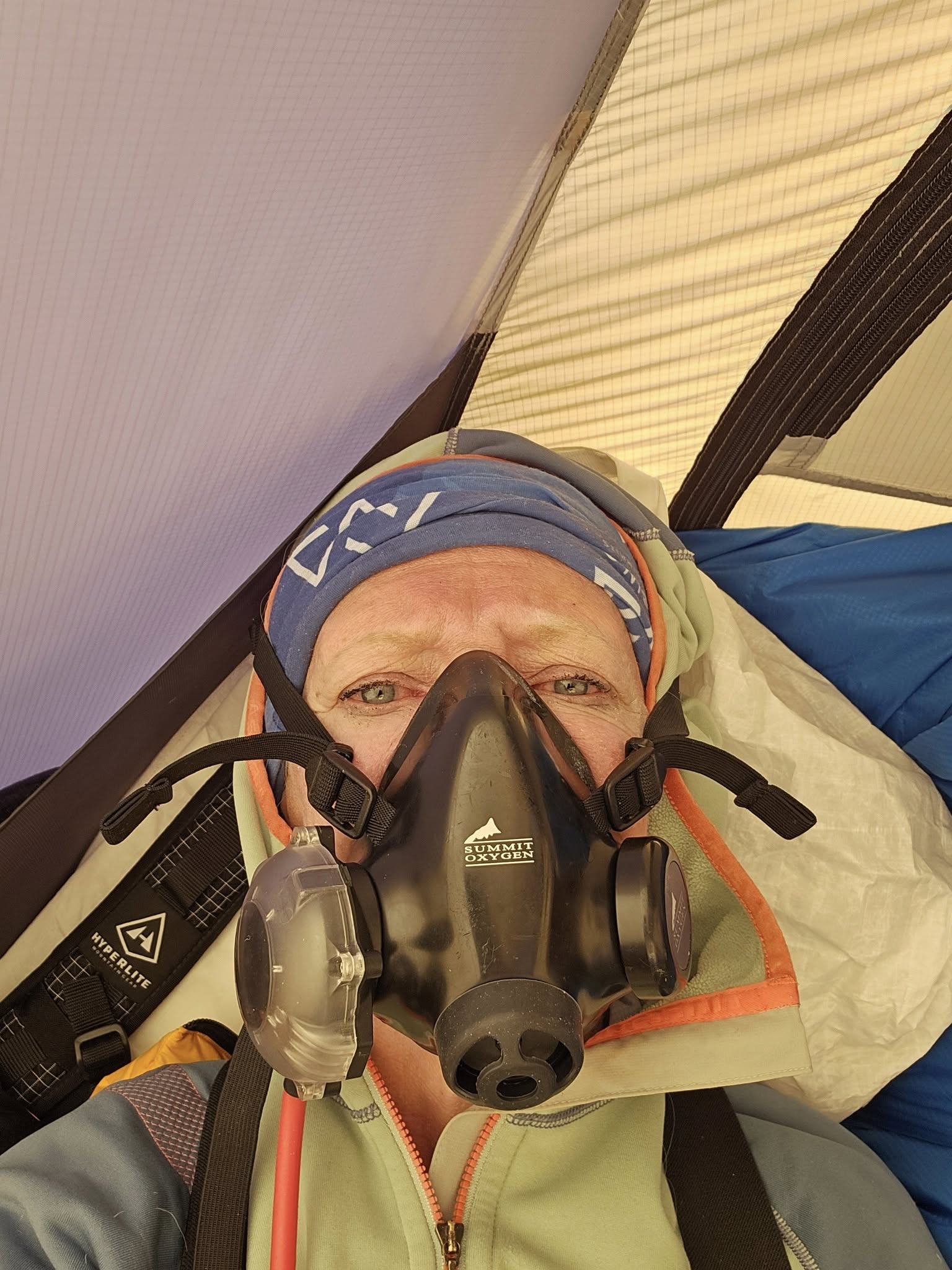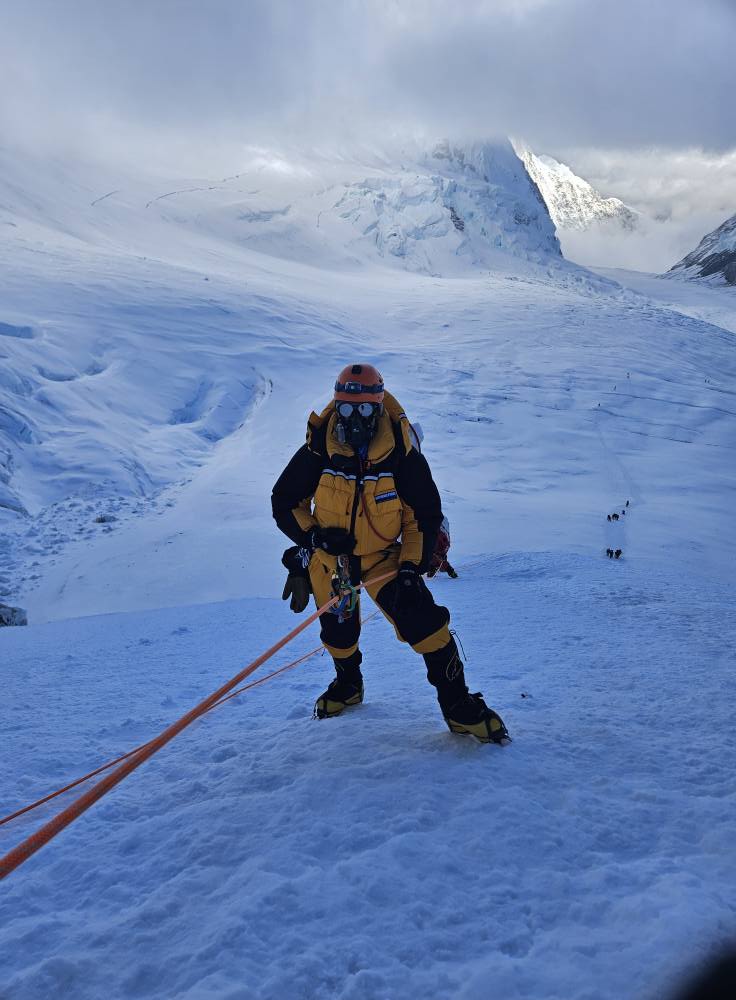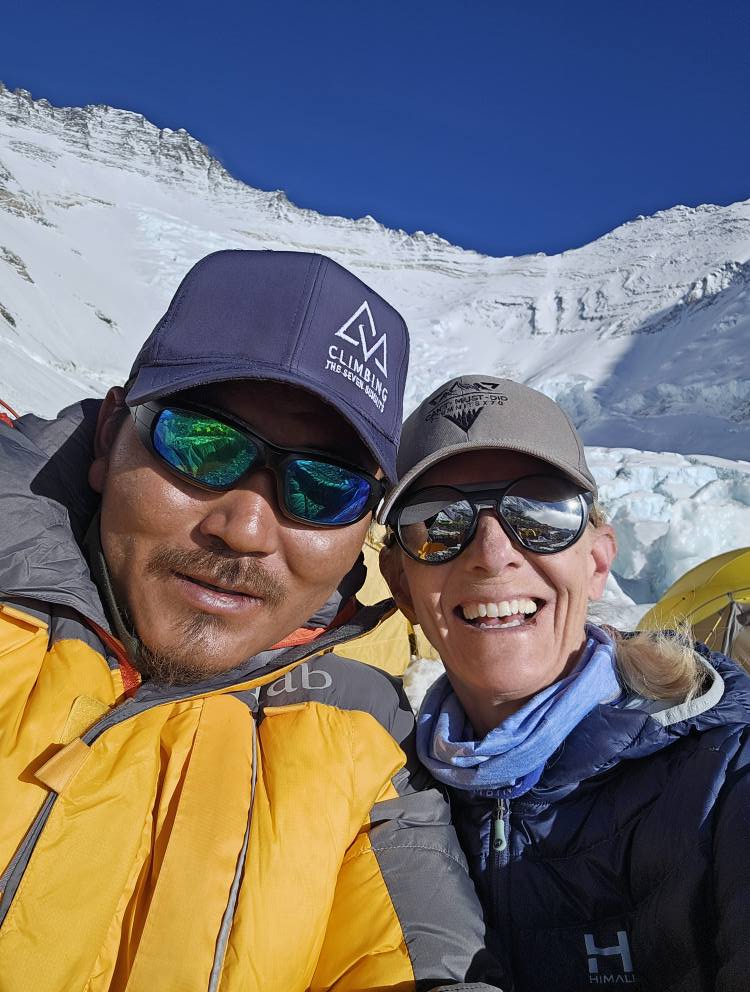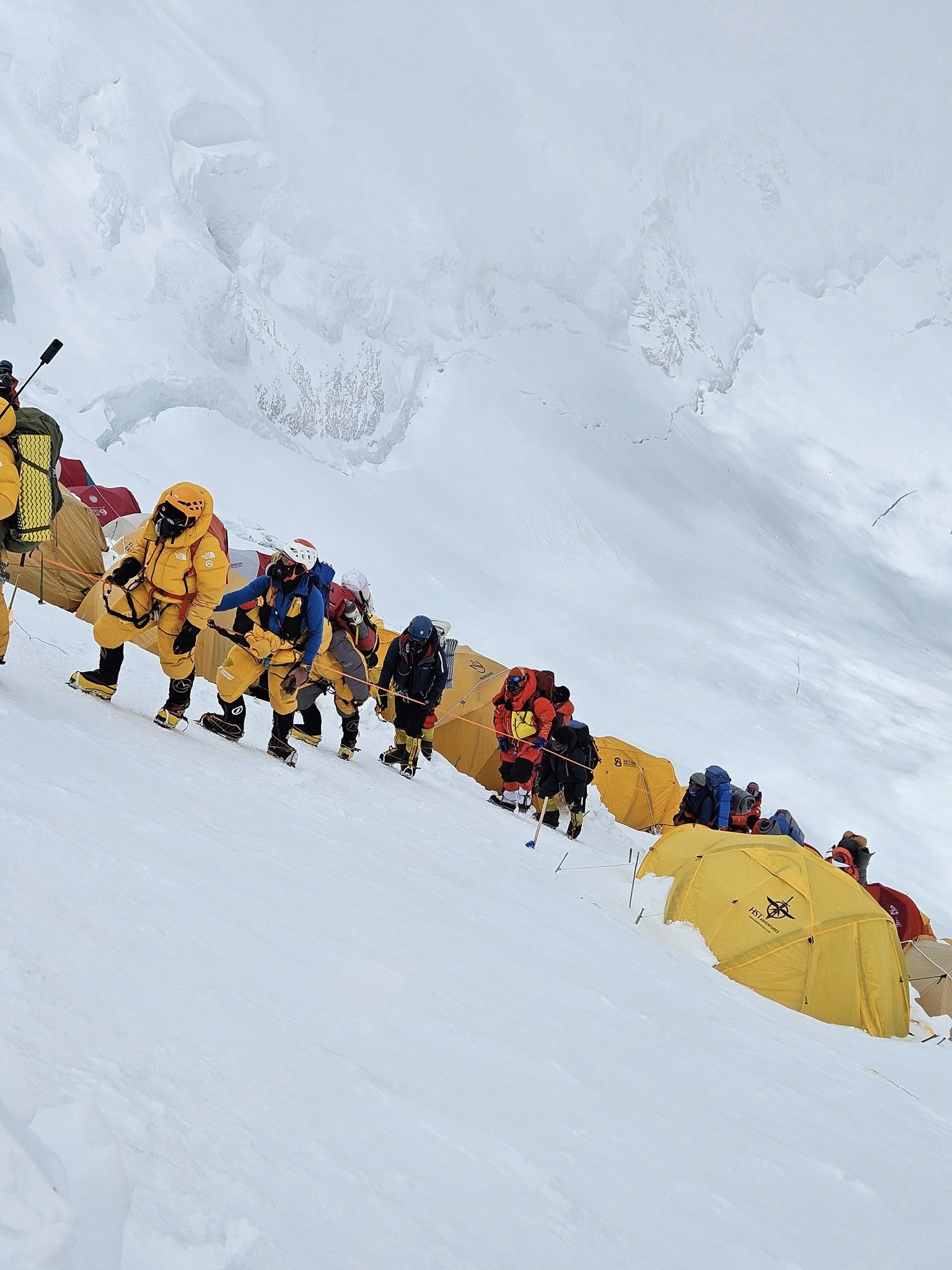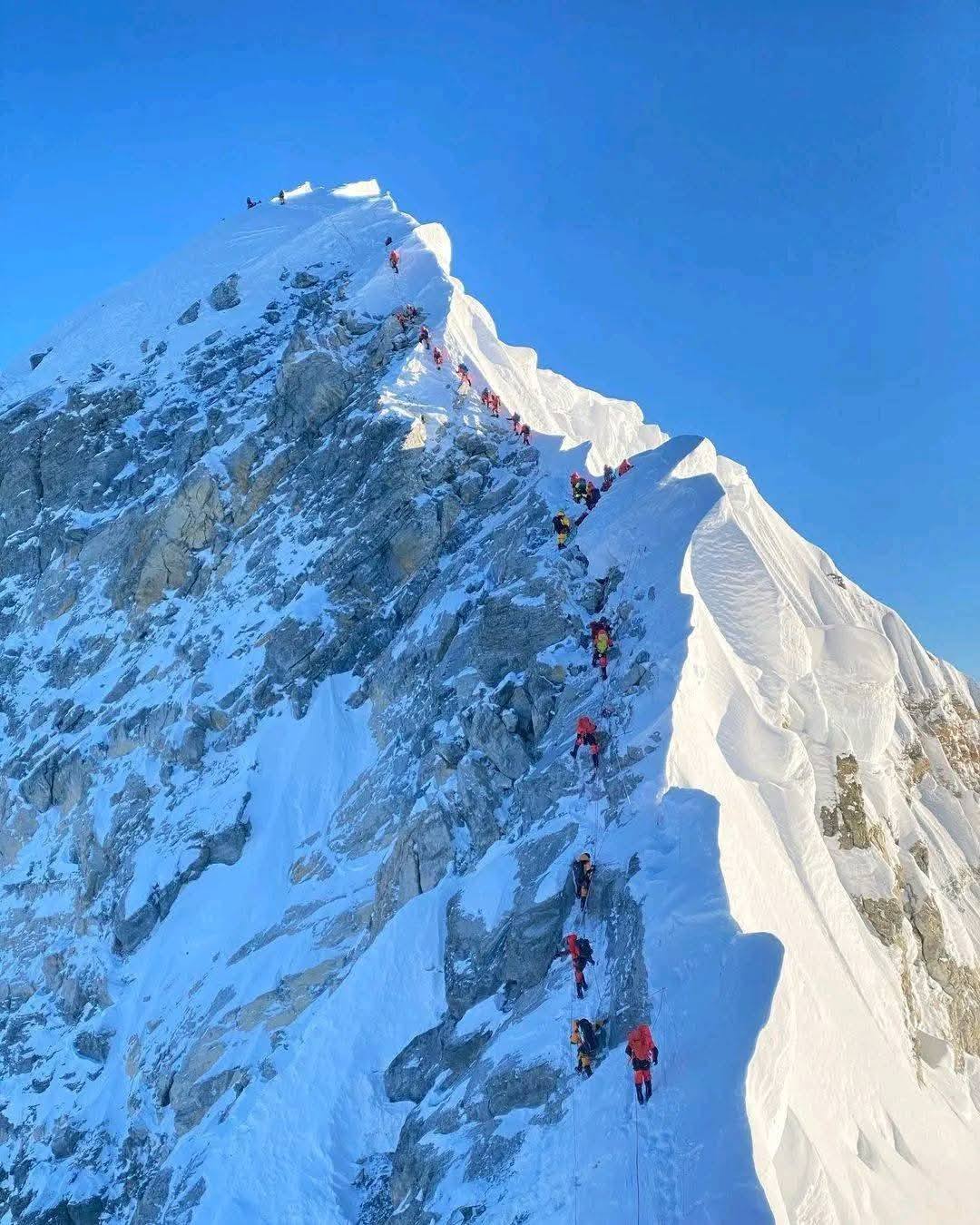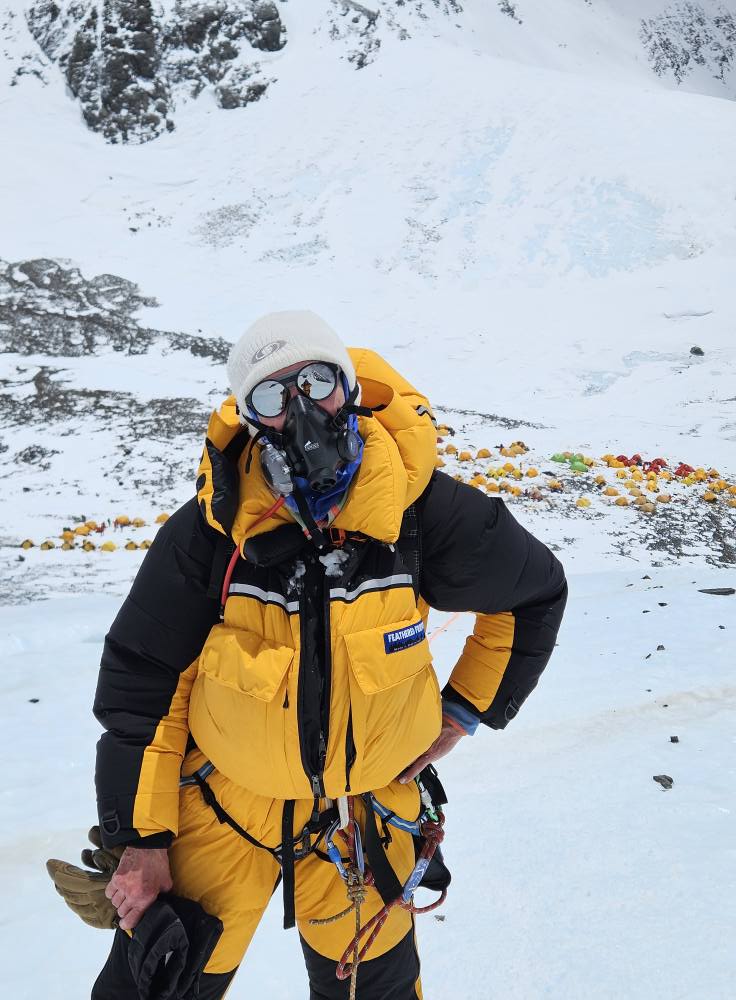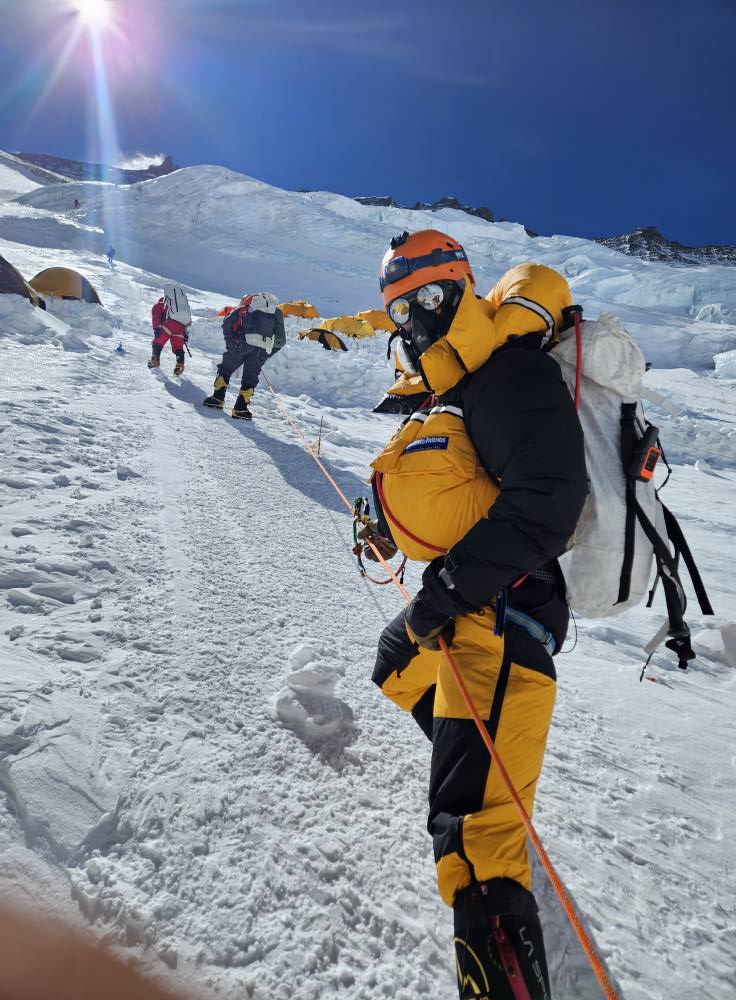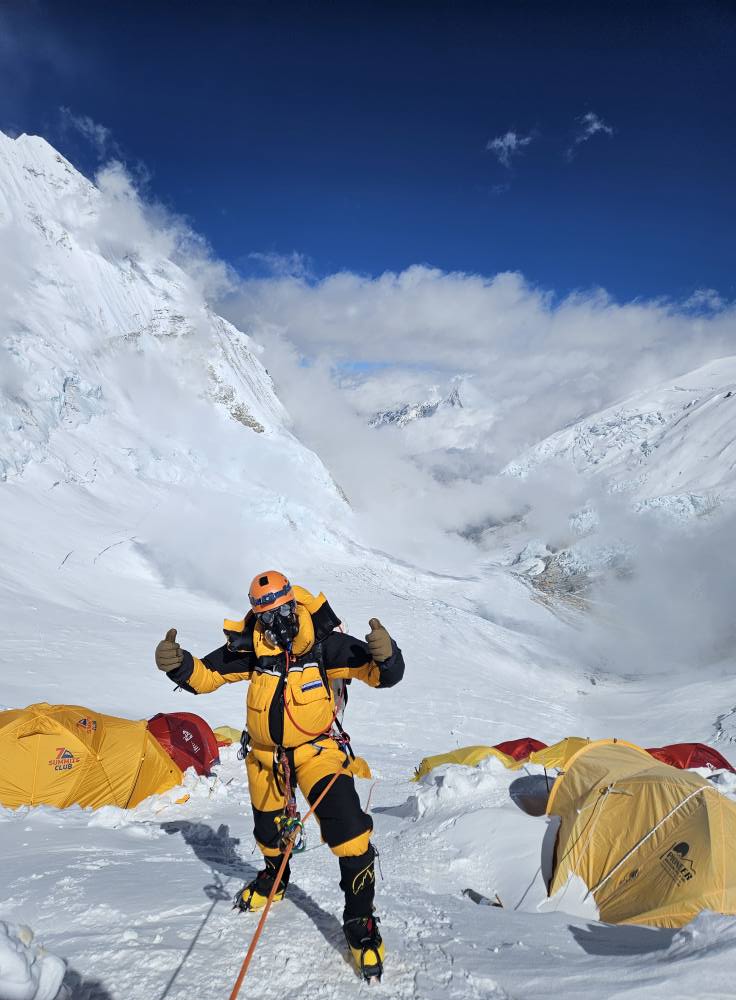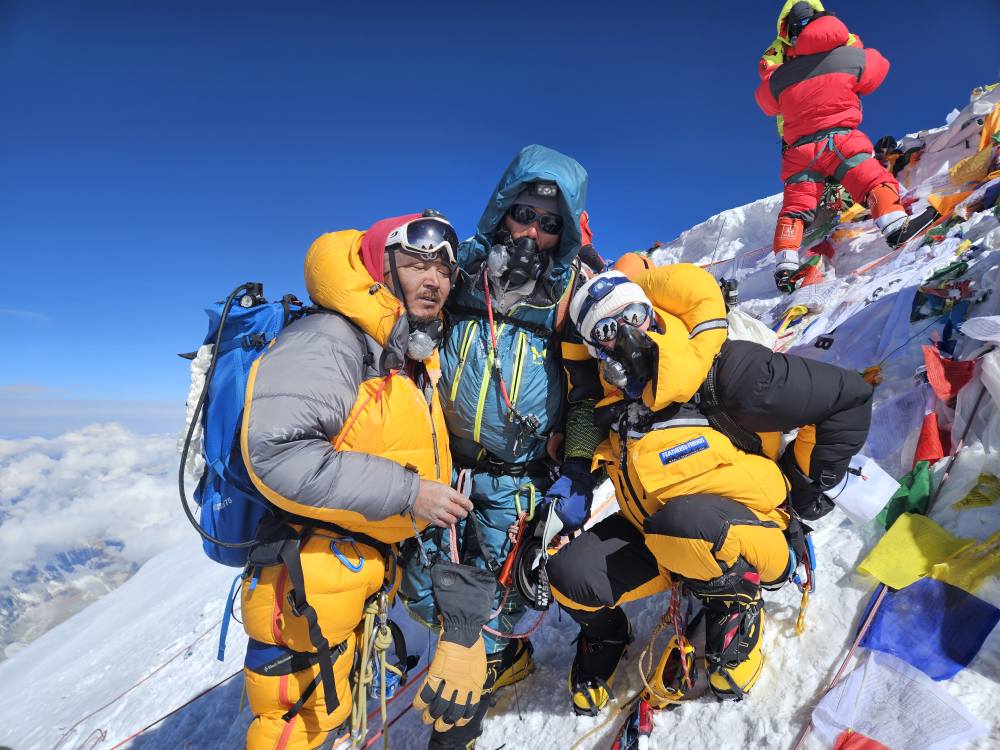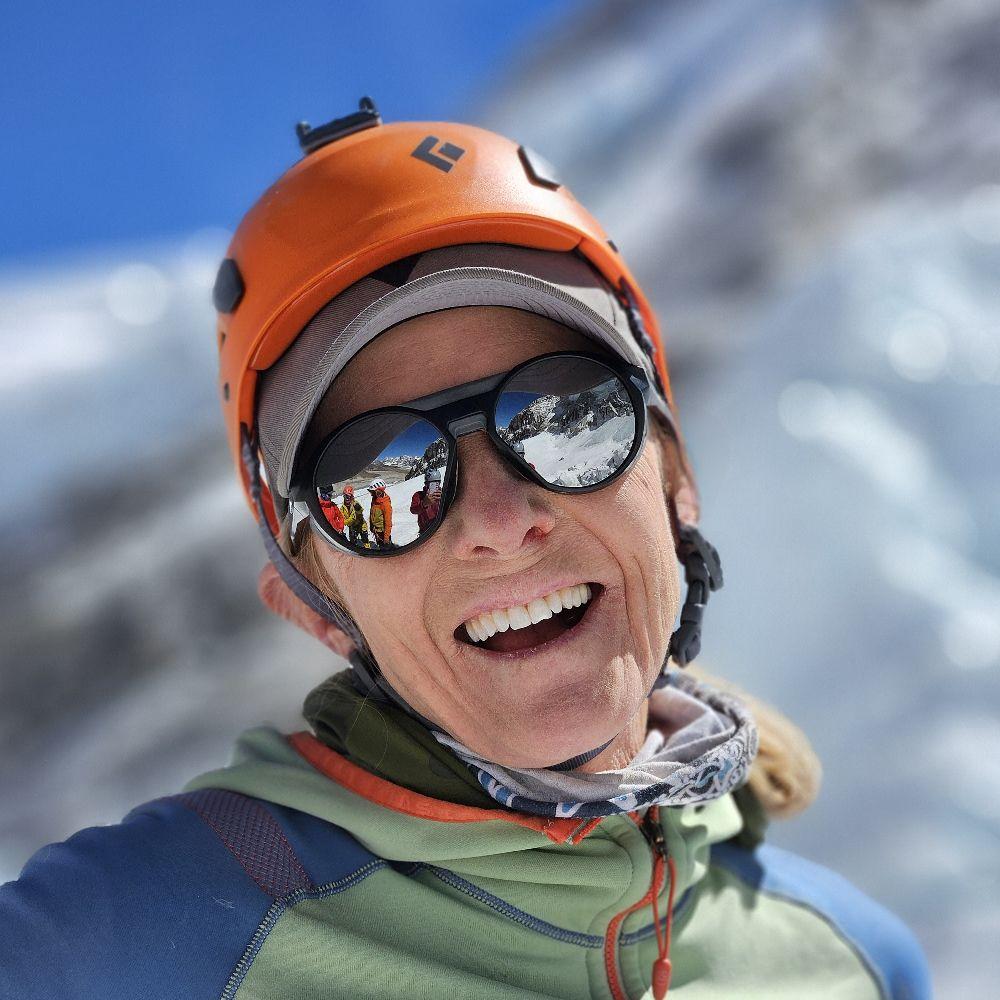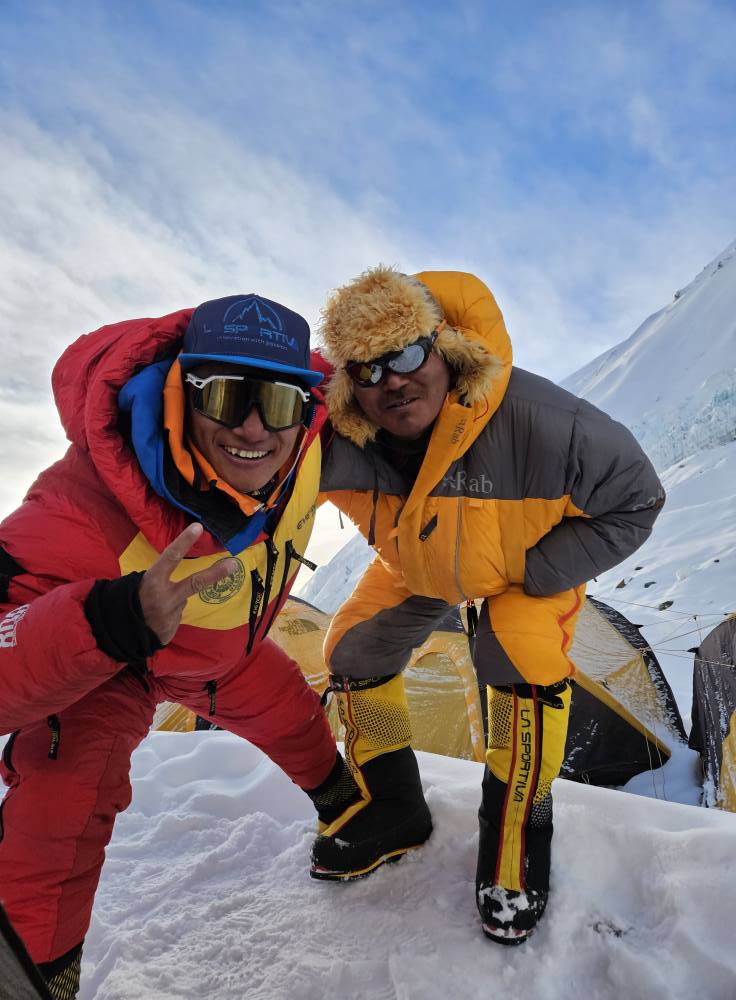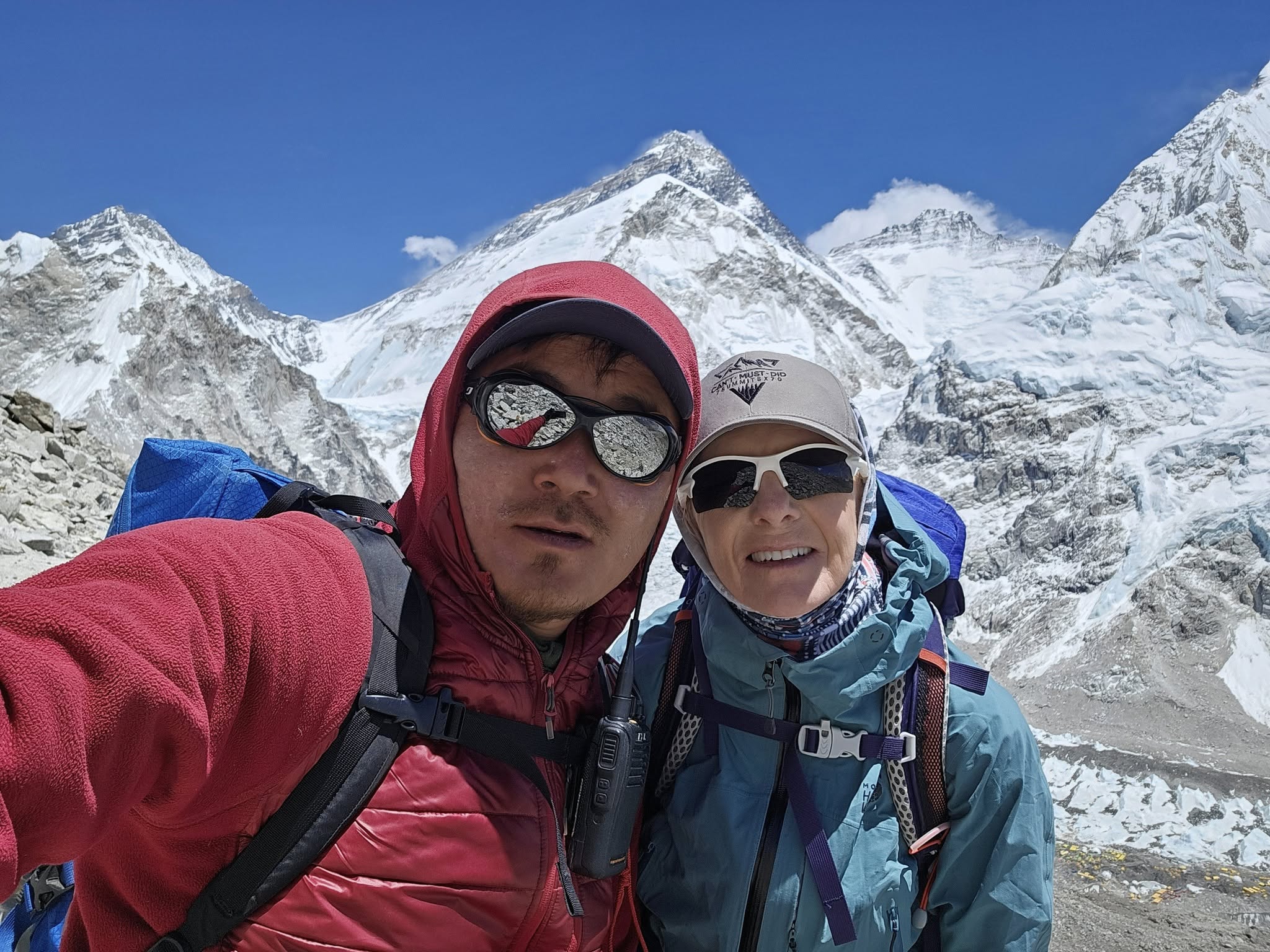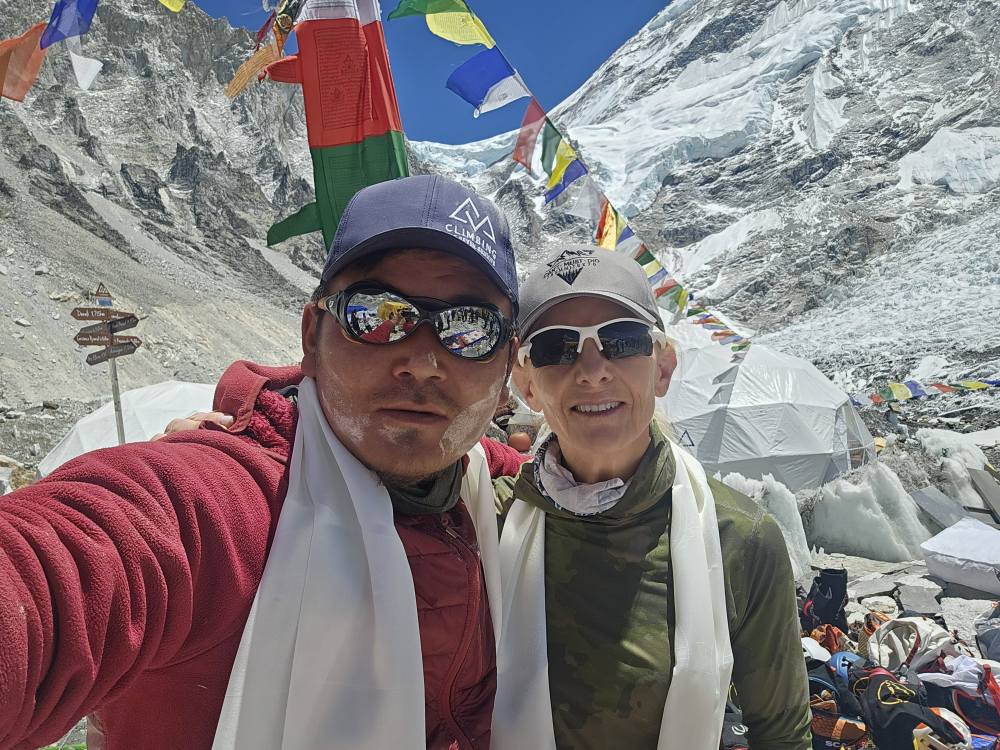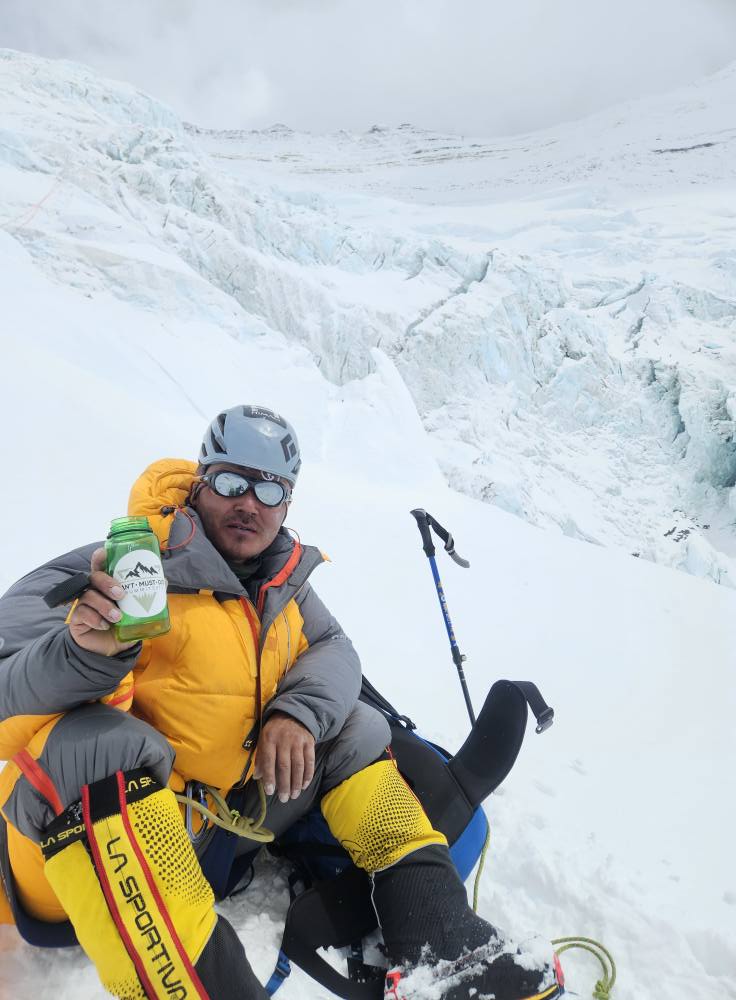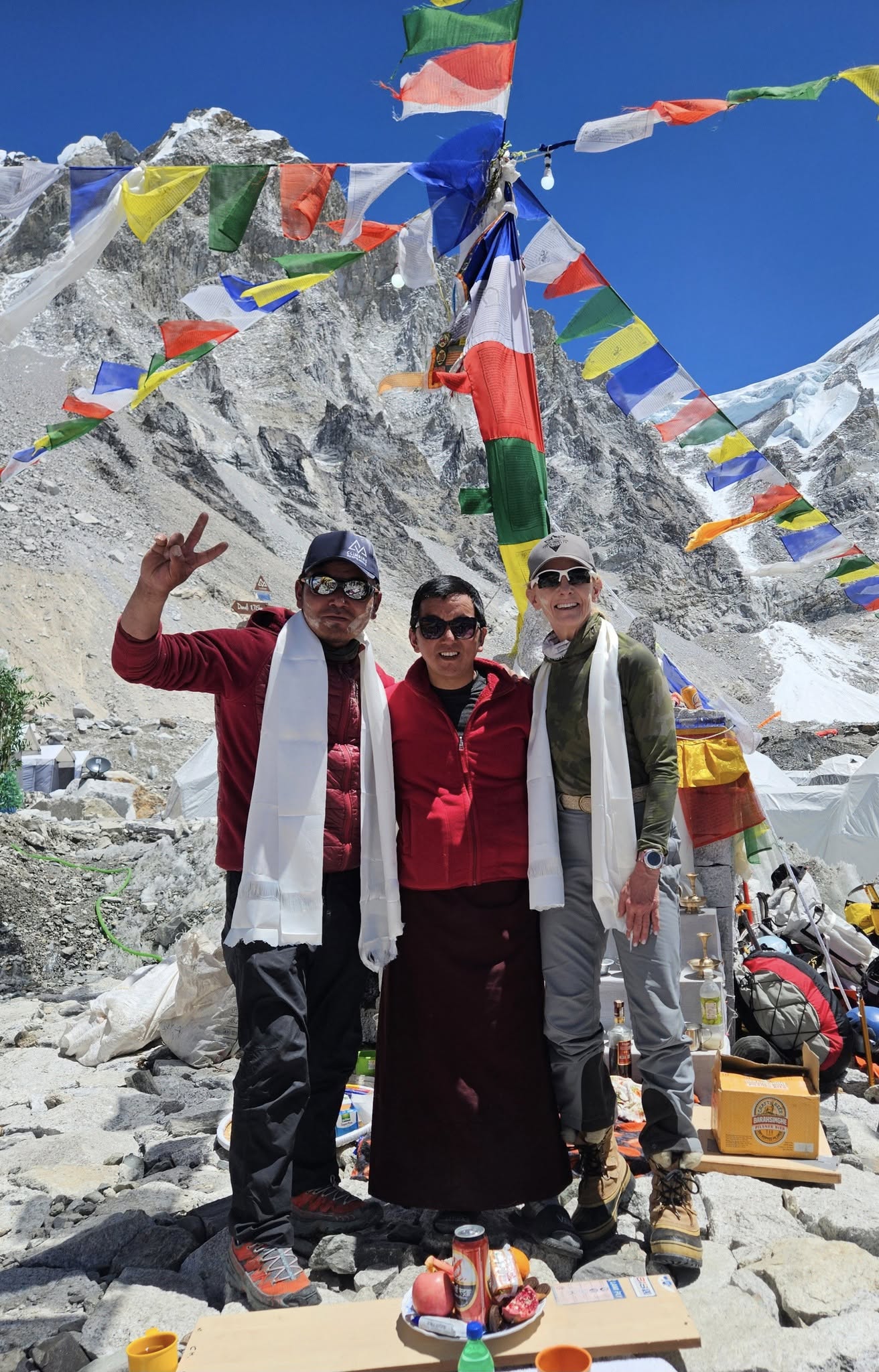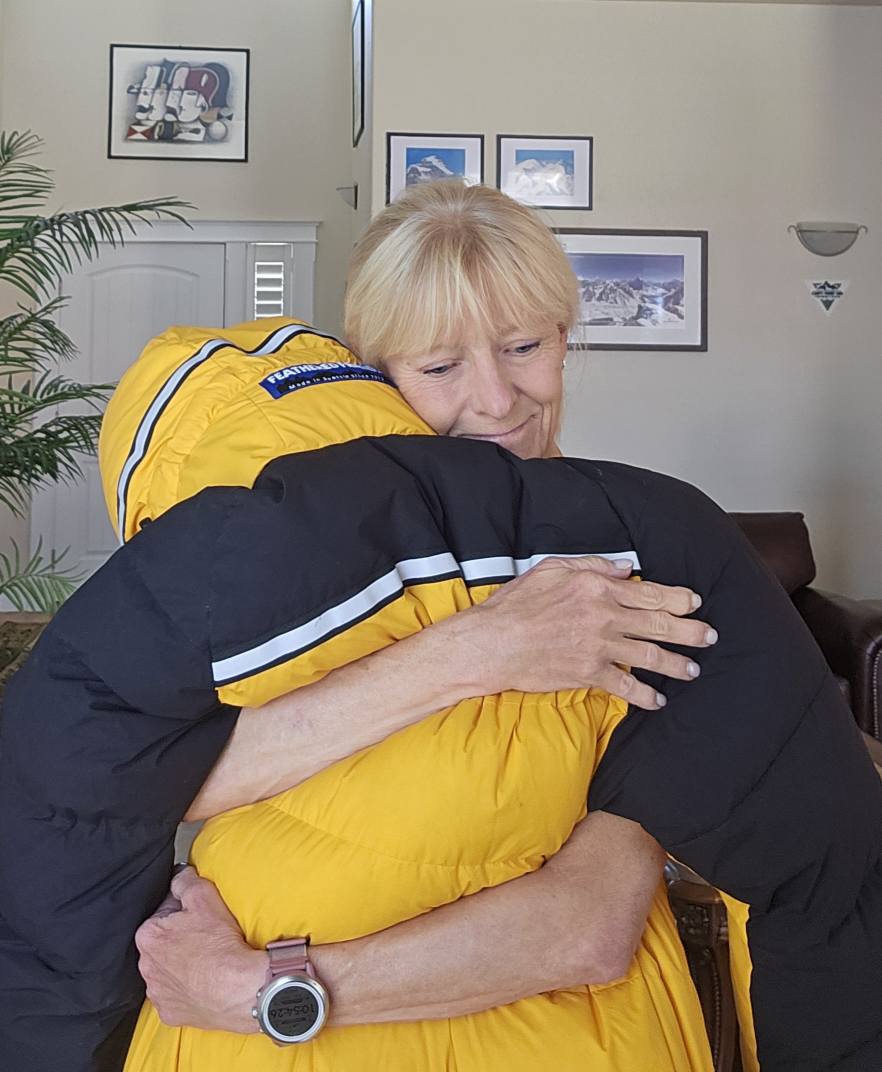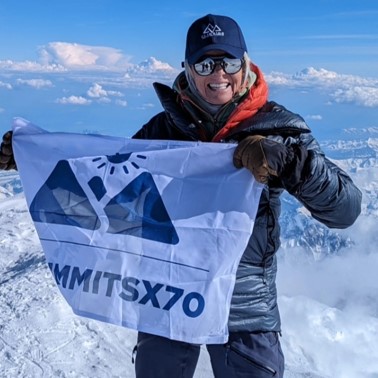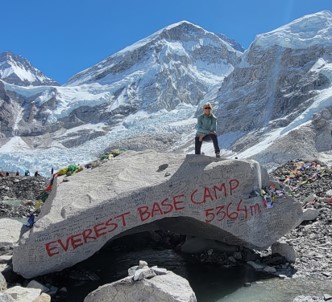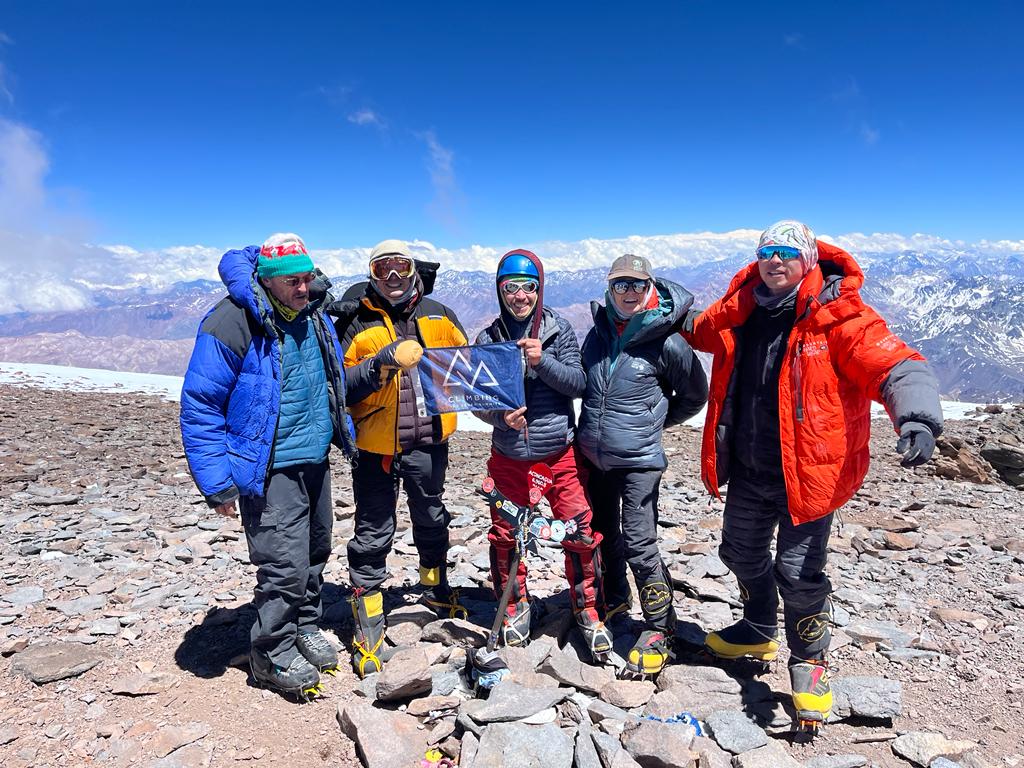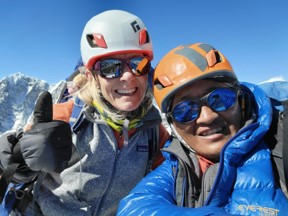Portrait of a Masters Mountaineer: Eva Steinwald’s Journey to Everest and Beyond
Eva Steinwald was 60 years old when she first laced up her mountaineering boots. She had just lost her husband of 26 years, was navigating life alone for the first time in decades, and felt the pull to try something completely new. But she was terrified of heights.
So Eva set her sights on Mount Borah, Idaho’s tallest peak, and its notorious crux: Chicken Out Ridge. She made it across, successfully reaching the summit, and instead of a summit selfie, she cried—not out of fear, but from the realization that maybe, just maybe, she was capable of more than she ever imagined.
Eva thought, “Oh my gosh. If I can do this… what else can I do?”
That first summit lit something in her. After Borah came Rainier, then a trek to Everest Base Camp, and soon she was chasing bigger mountains and exploring a deeper version of herself. Each climb became a step not just forward, but inward. Somewhere between the training hikes, gear checks, and long hours at altitude, her grief turned into grit, and a new purpose began to take shape.
Today, Eva’s goal is clear: to complete the Seven Summits by age 70 and raise awareness about climate change along the way, a mission she’s calling 7 Summits x 70. Since setting that intention, she has climbed Aconcagua and Denali, and in 2025, she stood atop Everest. But the real heart of Eva’s journey isn’t about bagging peaks—it’s the way she shows up: with humility, presence, and fearless vulnerability.

Five Days on Top: Eva’s Moment That Embodies Masters Mountaineering
When Eva stood on the summit of the world’s tallest peak on May 18, 2025, she broke a 17-year-old record, becoming the oldest American woman to do so. Five days later, another woman—Susan Agar, age 66—stood in the same place, quietly surpassing her. Eva responded not with disappointment, but with genuine pride and admiration. She publicly celebrated Susan and her accomplishment, lifting her up rather than lamenting her own loss of the record.
“I’m honored to introduce Susan Agar, a 66-year-old from Texas who climbed Everest, demonstrating incredible determination. Her mission is to reduce the socio-economic marginalization of post-menopausal women, showcasing women’s strength. I’m deeply moved and proud. She summited on May 23, 2025. I held the record for five days.”
It’s the kind of grace that inspires us—and it’s exactly who Eva is. Humble, driven, and community-minded, she exemplifies what CTSS means when we reference our No D*ckheads Policy. Her journey also captures the spirit behind our Masters Mountaineering program: helping climbers reach their goals on their own terms, at their own pace, not in spite of their age, but in partnership with it.
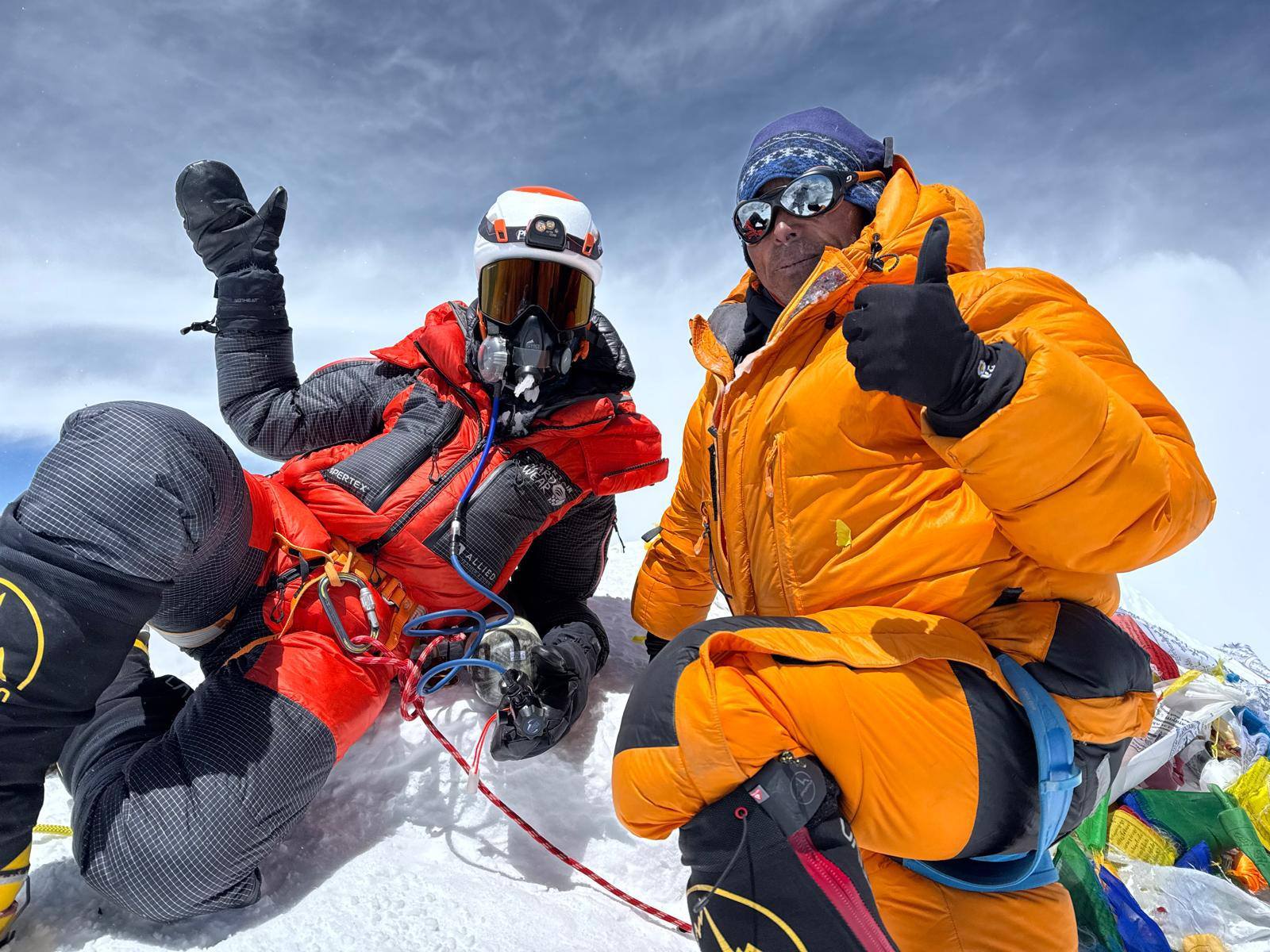
Masters Mountaineering: For Climbers Who’ve Lived a Little
After hearing from hundreds of climbers during our Masters Mountaineering webinar, one thing is crystal clear: you’re not done climbing, you just want to do it your way. More than 80% of participants told us they were looking for something different. They wanted to move at a more intentional pace. To climb with like-minded teammates. To chase purpose over performance. Whether you’re getting back in shape, starting fresh in your 50s, or just tired of chasing younger, faster teammates up the hill, you are not alone.
We designed Masters Mountaineering with you in mind. This program offers thoughtfully paced, expertly guided expeditions tailored for climbers 50 and up. It’s about dialing in, not dialing back. About preparation, connection, and building something that lasts longer than the summit buzz.
Here’s where we are climbing:

Mt. Baker Alpine Academy. Our flagship North American skills course, this expedition features ample time in our favorite alpine classroom with a summit bid where you can put your new skills to the test. Climbers will build confidence through techniques such as crampon use, glacier travel, rope systems, and self-rescue, making it perfect for those looking for an introduction to mountaineering or a refresher for those heading toward bigger peaks.
Kilimanjaro. A high-altitude climb that blends cultural immersion with thoughtful pacing, strong medical support, and an opportunity to stand on the Roof of Africa. Along the Machame Route, climbers will travel for ten days through five distinct ecological zones en route to Africa’s highest summit, with time built in to soak in this bucket-list expedition. With Star Guides like Pega Sherpa and Tendi Sherpa, and a gradual circumnavigation of the mountain, proper acclimatization will be a top priority.
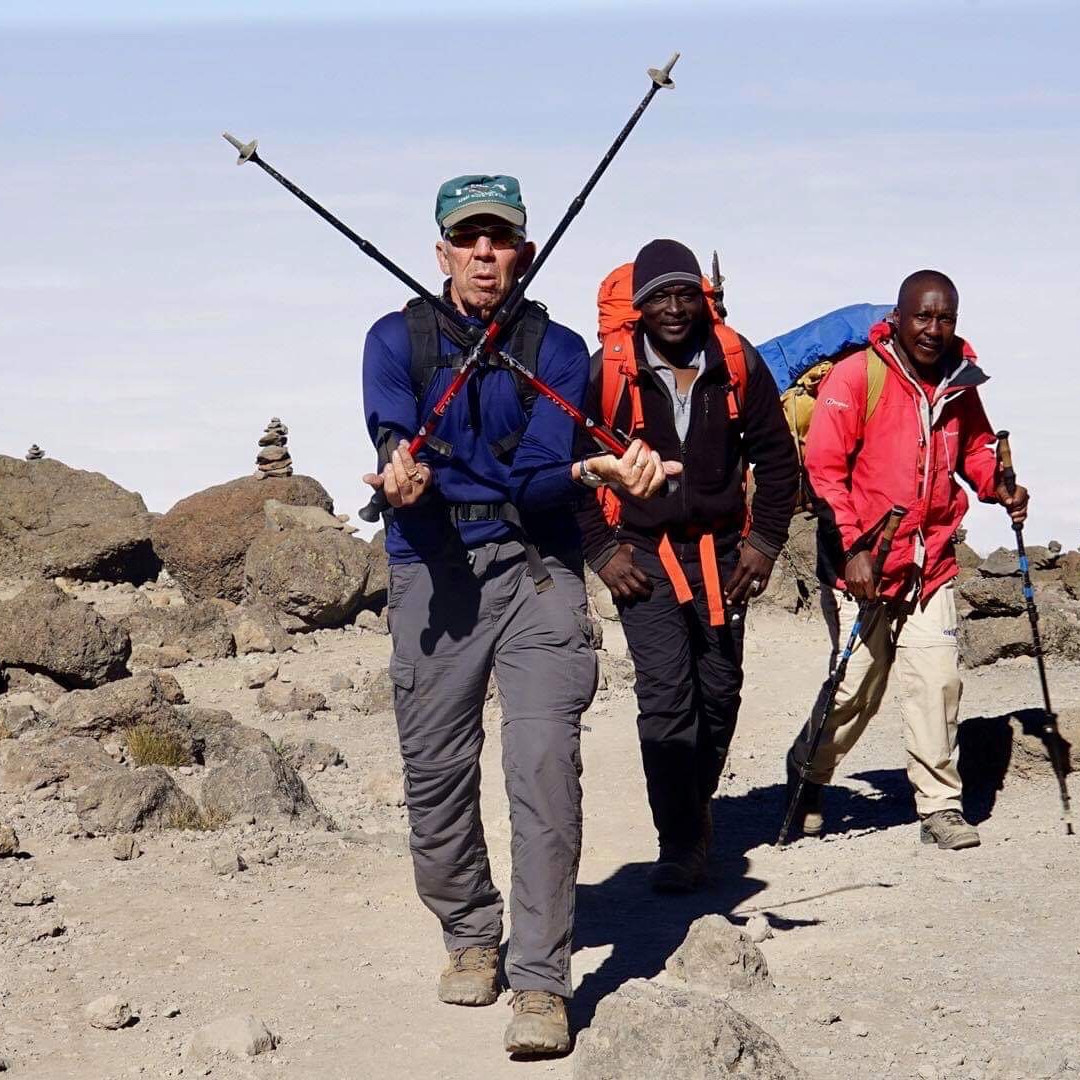
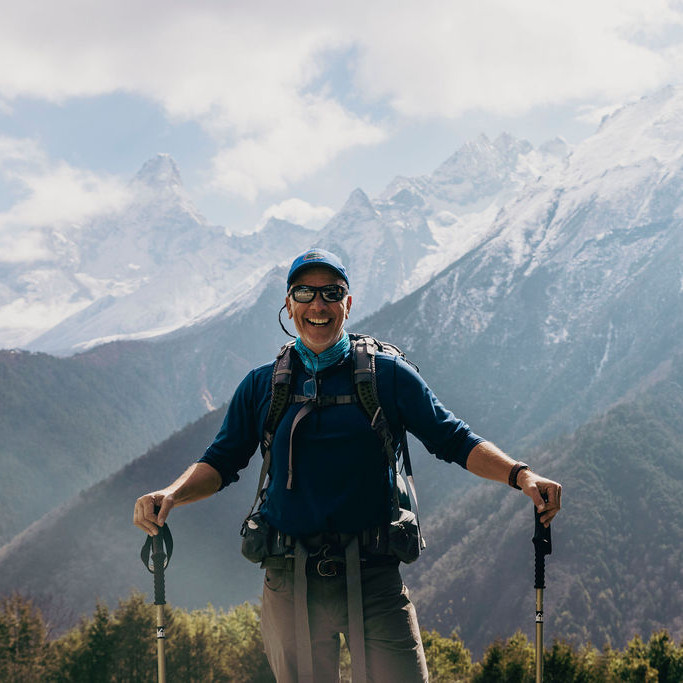
Everest Base Camp Trek. This is one of the most iconic treks in the world, and for good reason. The journey to Everest Base Camp takes you deep into the heart of the Himalayas, with support, pacing, and camaraderie that define our Masters experience. You’ll follow in the footsteps of legendary climbers as you weave your way through Sherpa villages, across suspension bridges, and into the shadows of the Himalayan giants. Your trek culminates at our luxury Everest Base Camp, offering a warm welcome and a front-row seat to the grandeur of the world’s tallest peak.
Lobuche East. Trek through the iconic Khumbu Valley, acclimatize gradually, and take on a stunning technical peak that offers both challenge and reward. With nights spent at Lobuche Base Camp and High Camp before your summit push, this climb offers a serious objective with a supportive lead-up. You’ll celebrate your efforts with a stay at our industry-leading Everest Base Camp, capping the trip with one of the most storied views in mountaineering. If you’re looking to kick-start your Himalayan climbing journey, this is the peak for you.

Hard-Won Advice: Tips from Eva, Dr. Emily Johnston, and Alan Arnette
No matter your age, the mountains demand respect. But for climbers over 50, smart prep isn’t optional—it’s essential. We’ve gathered some of the best insights from Eva Steinwald, high-altitude physician Dr. Emily Johnston, and veteran climber Alan Arnette to help you train wisely, fuel effectively, and stay resilient when things get hard.
Training: Train Smart, Not Just Hard
As we age, our bodies demand a more thoughtful approach to training. It’s not about backing off, it’s about building a foundation that holds up in the big mountains. That means more recovery time, less ego, and a big focus on strength, balance, and flexibility.
“We lose about 1% of our muscle mass every year after age 40 if we don’t do strength training. You’ve got to lift. If you’re going to go up a 40-degree snow slope at 20,000 feet, you need those legs and glutes,”
– Alan Arnette
Strength training is essential—but not the only piece. Yoga, single-leg work, and core exercises are key to maintaining balance and proprioception, especially on uneven terrain and during technical moves. Don’t just run, train for the terrain you’ll face on summit day.
Nutrition: Eat Like It Matters (Because It Does)
Altitude messes with your appetite, digestion, and food preferences. And yet, you need fuel—reliable, digestible, comforting fuel—more than ever. It’s not the time to try something new or stick to a strict diet.
“You have to bring food you’re excited to eat, even if it’s just gummy bears or your favorite salty snack. This is not a weight-loss plan; this is about fueling your climb,”
– Dr. Emily Johnston
Eva prepped her food in Ziplock bags, camp by camp, so there were no decisions to make at altitude; just eat and keep moving. Warm snacks, protein, and familiar foods go a long way. And don’t forget your gut health. Probiotics and fiber can help your body handle the stress and strain of high altitude.
Acclimatization & Efficiency: Slow is Fast
If there’s one truth about climbing high, it’s this: rushing ruins everything. Your body needs time to adjust to thinner air, and cutting corners can lead to serious setbacks. That’s why every CTSS trip builds in acclimatization rotations, extra recovery, and proven altitude strategies like the rest step and pressure breathing.
“There’s no shortcut to acclimatization. The key is time. Go slowly. Be patient. Let your body catch up to your ambition.”
– Alan Arnette
Eva’s Everest ascent was built on this philosophy. Her body thrived on slower rotations, and her summit was stronger because of it. Hydration plays a role, too, but as Dr. Em reminds us, overhydrating can be just as dangerous. Listen to your body. Clear pee is good, but constant peeing isn’t the goal. And yes, you’ll lose water just from breathing up there.
Editor’s Note: While there’s no shortcut to acclimatization, it is possible to shorten your time on the mountain through long-term pre-acclimatization at home. Our Speed Ascents program uses Hypoxico altitude tents and structured training to help climbers safely reduce their time at altitude, without skipping the physiological adaptation your body needs to succeed.
Mindset & Resilience: This Is the Real Work
The physical challenge of climbing is obvious. But the real mountain—the one inside your head—can be harder. Mental fitness means trusting yourself, staying grounded, and learning from every moment, summit or not.
“One of the best pieces of advice I give older climbers is: be gentle with yourself. Aging doesn’t mean you’re less capable. It just means you might need a little more time, and that’s okay.”
– Dr. Emily Johnston
When things got tough, Eva leaned on three simple words: “Can’t. Must. Did.” This mantra started as a reaction to self-doubt. When Eva found herself thinking, “I can’t,” she flipped the script: “If I must, then I will.” And when she did the thing she once feared? That was the final piece: “I Did.” For Eva, it’s a reminder that fear isn’t a stop sign—it’s a signal. A cue to pay attention, steady yourself, summon resolve, and take the next step. Eva’s mantra doesn’t guarantee success, but it helps her show up with intention, trust the process, and give her all, no matter the outcome.
What’s Next: For Eva, and For You
Eva isn’t done climbing. She’s taking time to reflect on her experiences on Everest, making note of the many things she learned, while also training for Spartan races, eyeing more Nepalese peaks, and her 7 Summits x 70 mission fully in motion. She’s climbing like someone who has just hit her stride.
Her story isn’t about defying age. It’s about embracing it with humility, presence, and a sense of what’s still possible. Eva’s story is proof that the mountain doesn’t care how old you are, but it will meet you exactly where you are.
Our inaugural Masters climbs are open, and we want you to come meet your moment with ample support, like-minded climbers, and a program built on purpose.
Help Us Shape Our Masters Mountaineering Program
As we expand this program, we’re looking to add more expeditions tailored for climbers 50+ who want to take on big mountains with expert support and a smart approach. Which peak, or peaks, should be our next Masters Mountaineering destination? Click below to help us shape the future of this program!
